



LAB #3 in the Art Data Money series
A weekend workshop, led by Brett Scott and The London School of Financial Arts, exploring different approaches to unveiling the financial sector – from open data mapping and photography to computer games and digital art installation pieces.
The financial sector is notoriously opaque and alienating to many people. It is cloaked in different forms of invisibility – either through secrecy and concealment, or through complexity, jargon and obscurity – and we often struggle to conceptualise how it works and how money moves.
Making the invisible world of global finance visible is a highly important task and there are a range of exciting projects attempting to do just that. In this two day workshop, we will explore different approaches to unveiling the financial sector, from open data mapping and photography to computer games and digital art installation pieces. We will look at new attempts at visualisation and sonification, and consider how money might be accurately represented in an era of digital payment via offshore tax havens.
Day 1 will be focused on explore, mapping and demystify the existing financial sector.
Day 2 we will work towards building an ‘Activist Bloomberg’. The Bloomberg Terminal is an expensive system that major banks use to get raw data and financial information. The Terminal is out of reach to most ordinary people, but can we create an open-source and open-access alternative Bloomberg to collect and distribute critical data on high finance? Let’s try!
Part of Furtherfield’s Art Data Money programme.

Finance is viewed as a niche area characterised by numbers, complex graphs, and professionals wielding obscure techniques, but the sector is in fact underpinned by human relationships, power dynamics and philosophical concepts that we all intuitively understand. Realising this is a great step towards keeping the financial commons open. At its core The London School of Financial Arts is about experiential learning, offering fun, adventurous, and experimental courses that immerse campaigners within the financial dark arts.
More info: http://lsfa-hackspace.cc/
Brett Scott (UK) is campaigner, former broker, and the author of The Heretic’s Guide to Global Finance: Hacking the Future of Money (Pluto Press). He blogs at suitpossum.blogspot.com and tweets as @suitpossum
LAB #1 in the Art Data Money series
Walkshop and Commodity Consultation
Come for one or both sessions, or just drop in for a chat about MoCC over tea and cake.
For both the morning and afternoon session please BOOK HERE.
10:30am – 1:30pm Walkshop – BOOK HERE.
Join us for a walkshop exploring places, moments and technologies of trade and exchange in the Finsbury Park retail area. We will be out and about for around 90 minutes followed by a group conversation on relations between data, trade and values and how they are affecting our daily lives and spaces. Please dress for the weather and bring a smart phone/camera and means to download images. Coffee and cake provided.
2.00-4:30pm Commodity Consultation – BOOK HERE.
Use LEGO re-creations and animated gifs to explore the values held in your own experiences of trade and exchange. Our Commodity Consultant will be available throughout the afternoon to research your commodity questions, helping you add your own things of value to the Museum of Contemporary Commodities.
Part of Furtherfield’s Art Data Money programme.

The Museum of Contemporary Commodities (MoCC) is neither a building nor a permanent collection of stuff – it’s an invitation. To consider every shop, online store and warehouse full of stuff as if it were a museum, and all the things in it part of our collective future heritage.
MoCC is an art-social science project led by artist Paula Crutchlow (Blind Ditch) and cultural geographer Ian Cook (University of Exeter) in collaboration with Furtherfield.
The project is supported by the Economic and Social Science Research Council, Islington Council, All Change Arts, Exeter City Council and University of Exeter.
Featured image: mi.mu/Adrian Lausch – mimugloves
A new series of quarterly events facilitating better communication and collaboration between creative technologists and arts/media professionals*
Artful Spark is not a sales pitch or a soapbox, but a way for people who might not know about projection mapping or haptic controllers to see technologies demo’d and discuss their potential for new ways of telling stories and making experiences.
Our speakers will demonstrate technologies- from how to turn them on to talking about their capabilities for creative content. They’ll also talk about their own projects and be frank about the hurdles they’ve encountered along the way.
For our inaugural event we’re focusing on Wearable Tech
Rachel Freire is a clothing designer and leather specialist working across multiple disciplines of fashion, film and stage. She is textile developer for the Mi Mu Gloves: http://mimugloves.com/
Zoe Philpott, Creator of Ada.Ada.Ada, a new show about Ada Lovelace which combines interactive theatre, science lecture, and wearable technology: http://adatheshow.com/
Tine Bech, professional artist and researcher (PhD), uses technology to create large scale public artworks, interactive spaces, and participatory games that engage people into play and participation: http://www.tinebech.com/
Tincuta Heinzel is an artist, designer and curator interested in the relationship between arts and technosciences. Currently she is a research fellow at Nottingham Trent University in the frame of “An Internet of Soft Things” project. http://aninternetofsoftthings.com/
Email sam@stellarnetwork.com if you’d like to be put on our mailing list.
* Including those working in theatre, film, publishing, museums, galleries and games.
Hazar Emre Tez has created Sonic Tunnel as a delightful and innovative solution to wayfinding in Finsbury Park. Come and explore the park following a sonic route that has been created using strategically placed speakers to broadcast sounds as an alternative to traditional visual signage.
Hazar Emre Tez is a musican, performer and engineer. After his master degree in Universitat Pompeu Fabra – SMC, he started his PhD in Queen Mary University of London, Media Arts and Technology. Currently, he is working on interaction and sound design, he has programming skills and is making electroacoustic music.
Start your visit on the surroundings of Furtherfield Commons – view map
Finsbury Gate – Finsbury Park
London
Furtherfield in partnership with MAT PhD programme, Queen Mary University.
Leave your money at home and use your personal data to buy, sell, or barter for a delicious range of commodity experiences at the MoCC Free Market. Local residents, park visitors, and online participants are invited to share how they value shopping and trading, in the street, and on their devices. In doing so, you’ll be helping us to develop a radical new artwork for exhibition at Furtherfield Gallery in September 2015. Come along to Finsbury Park and find out more.
Entrance is free on production of a MoCC loyalty card, available on arrival.
Watch out for the MoCC Roaming Marketeer to claim your reward vouchers.
Follow the event @moccofficial and find out more about online involvement.
This event is part of the research and development process for Museum of Contemporary Commodities, MoCC produced in partnership with Furtherfield, and supported by Islington Council, All Change Arts, ESRC and University of Exeter.
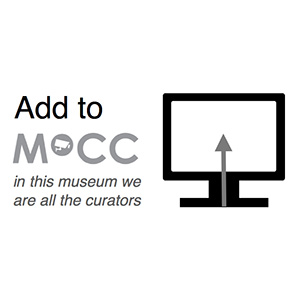
Add your valued commodities to Museum of Contemporary Commodities and help us test out our interaction prototype.Warm up with a Virtual Shopping trip, where you can map and discuss your trade and exchange habits with family, friends and strangers. Find out detailed information on the provenance, materials and trade-justice issues contained within your chosen commodity through a Live Chat with our expert Commodity Consultants. Upload your commodity to the MoCC database, and help curate MoCC in Finsbury Park.
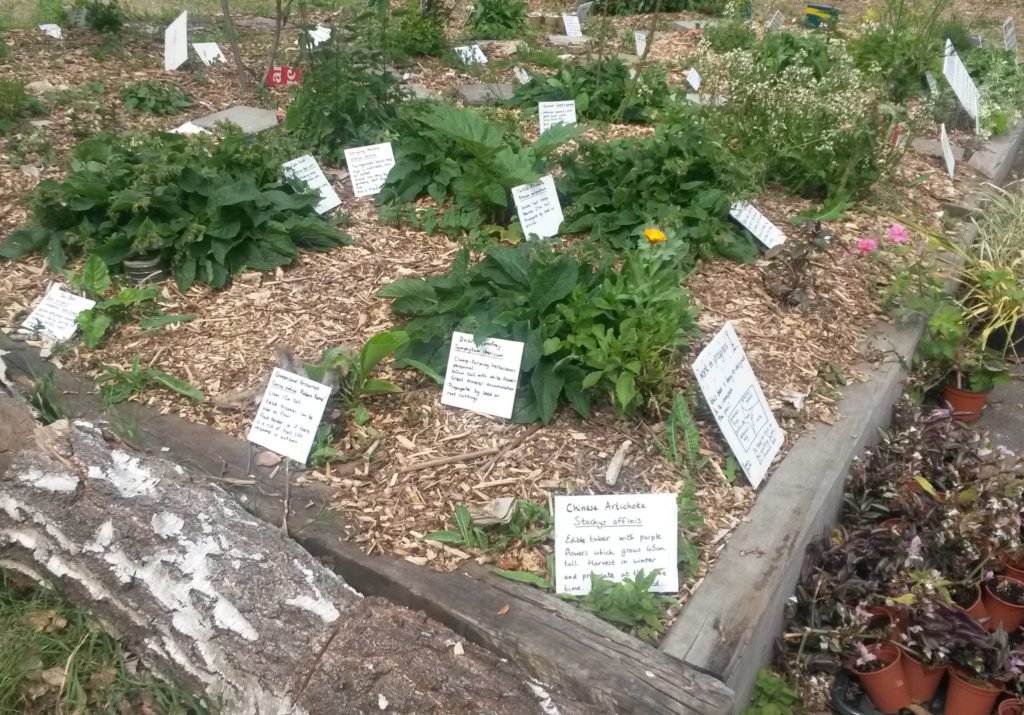
A volunteer-cooked free meal, from the Edible Landscapes PACT kitchen, near to the Manor House gate. Trade your data for a free delivery of your meal, or organise your own pickup free of charge. www.ediblelandscapeslondon.org.uk (Friday only)
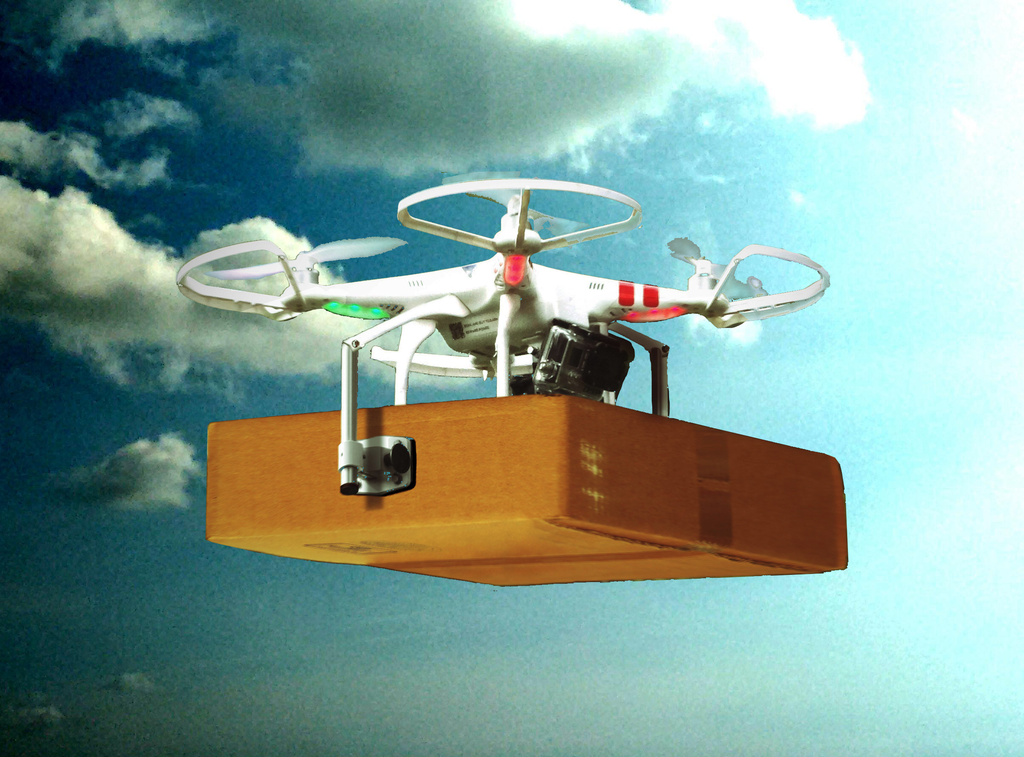
Discover your future through the Forebuy service. We will scientifically predict your next most urgent desire and discover in real time which affordable and amazing product is ready and waiting for you. Stop by and discover unexpected treasures from Finsbury Park surroundings whilst chatting about needs and algorithms.
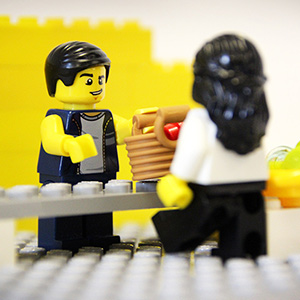
Use LEGO re-creations to turn your data and commodity stories into animated gifs, whilst sharing your experiences of local trade and exchange with Finsbury Park locals.
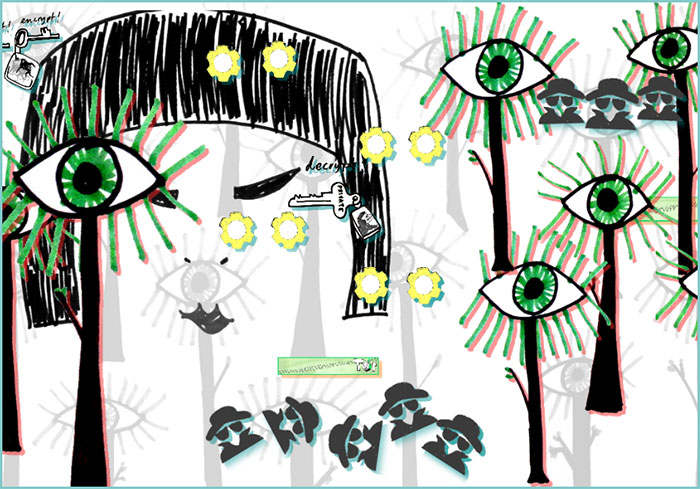
A 3 day event for all the family to draw, make and play online games for the future of the park for the health and prosperity of all…or for total catastrophe. It’s all about the future these days. So take a drawing challenge and imagine a different future. Share your vision and see it turned into free online games to play, remix and share. Developed by Ruth Catlow (Furtherfield) and Dr Mary Flanagan (Tiltfactor) www.playyourplace.co.uk
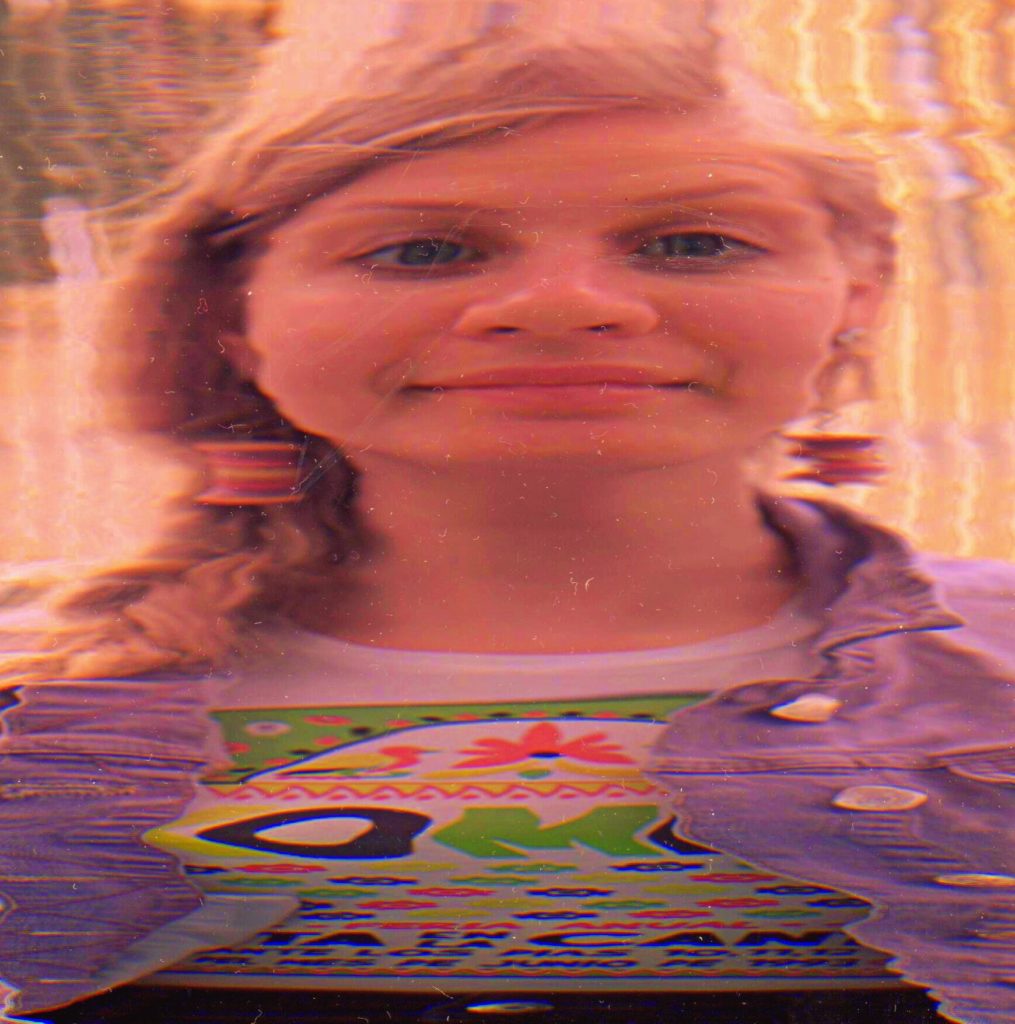
Ever fancied your having your portrait drawn by a street artist? Go one better with our hacked scanner. A truly individualised datafication process, and a great souvenir of the Free Market! Our hacked scanner was built with advice from artist Nathaniel Stern. The stall is being run by Furtherfield artist in residence Carlos Armendariz and Amelia Suchcika. Read more here.
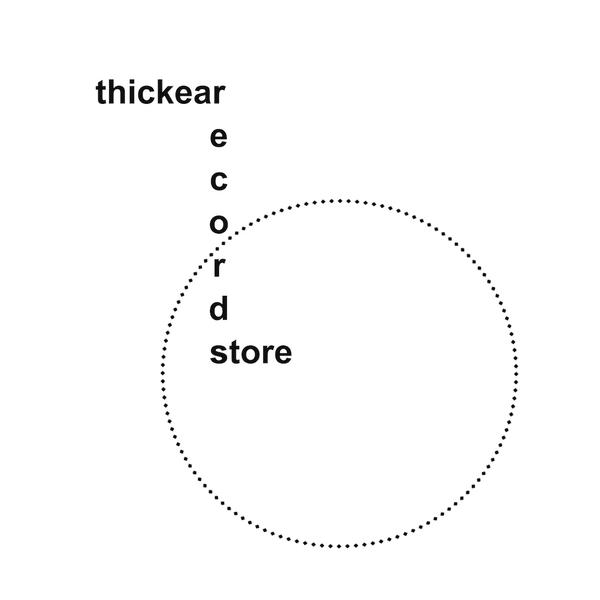
Browse the most up-to-date recordings, release your own records and walk away with limited edition thickear art tapes. No need to bring anything except your personal details – thickear Records Store is a one-stop-swap-shop for exploring current models of currency and exchange. An ongoing series of participation, performance and installation artworks about public transaction, which investigate economies of data exchange and consider how transactions are employed to create value. www.thickear.org
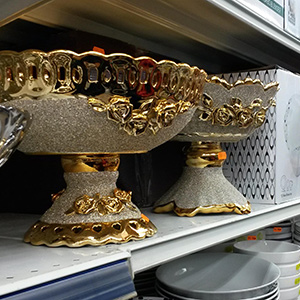
Take a quiz! Match your shopping habits to our detailed guidelines and share your results with your social network.
Park visitors of all ages… Free your office scanner and get your creative juices flowing in Finsbury Park this Summer!
Join us to build a collective portrait of Finsbury Park to be shown at Furtherfield Gallery and in an online exhibition.
With Furtherfield’s artist in residence, Carlos Armendariz, you will create intriguing images of the park with hacked scanners inspired by the Rippling Images of commissioned US artist Nathaniel Stern.
All are welcome, including children with their guardians. The workshops are free but BOOKING IS ESSENTIAL. Click here to book any of these dates:
tweet your images using #wescanfinsburypark
Nathaniel Stern has been using hacked desktop scanners to create beautiful images for over a decade. As part of the exhibition Beyond the Interface – London, he hung 21 large scale prints outside of the Furtherfield Gallery and produced a complete new series of images available online: Rippling Images of Finsbury Park.
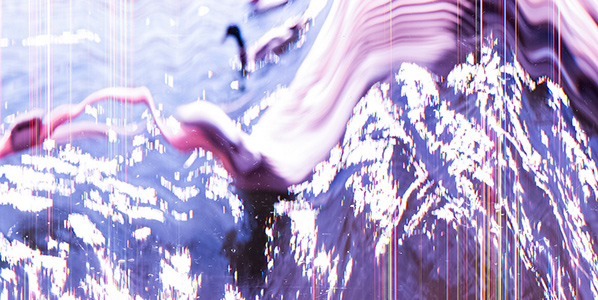
Stern hacks desktops scanners to transform them in portable image capturing devices, and uses them to “perform images into existence”. This process create interesting connections between his body, the scanned environment, and their movement at the time of capturing. Stern himself explained his process in detail in his TEDx talk: Ecological Aesthetics.
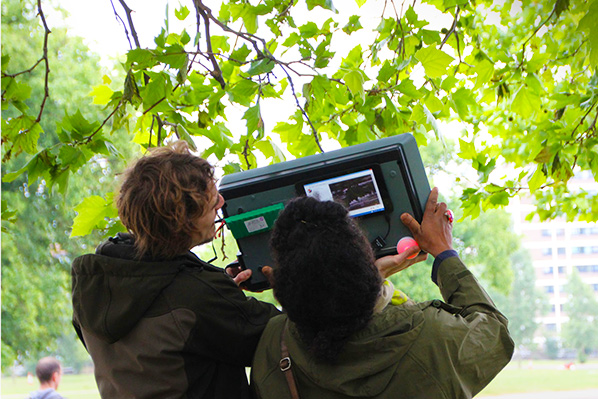
Now Furtherfield Gallery is offering a series of workshops for all ages which will allow the participants to experience Stern’s artistic process. You will learn how to hack a scanner and use one of the artist’s scanners to create your own images. The goal is to create a collective portrait of Finsbury Park and there is a chance to show your work in Furtherfield Gallery.
Furtherfield in partnership with MAT PhD programme, Queen Mary University. Pictures of the workshops by Alison Ballard.
This Symposium aims to bring together a range of practitioners from the Performing Arts and theorists, including those involved with, but not limited to, dance, music, opera, theatre, magic, puppetry, and the circus. To discuss issues and opportunities in designing digital tools for communication, artistic collaboration, sharing and co-creation between artists, and between artists and actively involved creative audiences.
There are numerous existing online platforms that provide immediate and easy access to a vast range of tools for creative collaboration, yet their majority create and maintain networks within a ‘noisy’ social media environment, are based on a centralised model of collaboration, and are built on corporate infrastructures with well-known issues of control, identity, and surveillance.
Focusing on the Performing Arts, the symposium will take a bottom-up approach on how to design online collaborative tools without the noise of social media, drawing on peer-to-peer decentralised practices, infrastructures for building communities of interest outside the imperatives of corporate control, developing new kinds of narratives and synergies that add depth to artistic practice, blurring the distinction between artist and audience. We will discuss about what participation, collaboration, and co-creation means for the performing artists and their audiences in an online networked world and bring to the dialogue the needs, expectations, desire, aspirations and fears of working online collaboratively. We will identify, articulate and discuss artistic, social and design issues and opportunities, analyse existing projects and current practices, experiment with ideas and concepts and visual designs.
In brief, the symposium’s goals are:
The insights of this workshop will provide the base for a second, multidiscplinary workshop that will bring together performance artists and creative technologists and coders and whch will take place on the 14th July 2015 as part of the British Human-Computer Interaction conference at Lincoln, UK.
http://designdigicommons.org/http://british-hci2015.org/participation/workshops/
Walkshop, making session and drop-in day
Come for one or both sessions, or just drop in for a chat about MoCC over tea and cake.
11am-1pm – Data Walkshop with data activist Dr Alison Powell (LSE)
Explore and discuss the data surveillance processes at play in Finsbury Park through a process of rapid group ethnography. Arrive from 10.30am at Furtherfield Commons for a short introduction to the project. We will leave at 11am for a 60 minute walk around the area followed by snacks and discussion. Please bring:
BOOK HERE (places limited to 12 on a first come first served basis)
2pm-4.30pm – Making session: LEGO Re-creations & Interactive Posters
Work with Cultural Geographer Dr Ian Cook to turn your commodity stories into activist LEGO re-creations. Inspired by Nathaniel Stern’s hacked scanner, artist Carlos Armendariz will help you translate your data findings into visual events. Produce arresting images for an interactive poster for public display, then track and count its impact.
You are welcome to bring your own smart phones and computers along.
BOOK HERE
This event is part of the research and development for the Museum of Contemporary Commodities, an art and social project led by artist Paula Crutchlow (Blind Ditch) and cultural geographer Ian Cook (Univeristy of Exeter).
More info: http://www.moccguide.net/
In partnership with The Arts Catalyst.
‘Living Assemblies’ is a hands-on workshop, led by designer and researcher Veronica Ranner, investigating the coupling of the biological material silk, with digital technologies. This workshop is organised by The Arts Catalyst in cooperation with Furtherfield.
We invite participants (experts in their own field – artists, designers, scientists, writers, technologists, academics, and activists) to join a weekend-long workshop, in which we will experiment with silk and a range of transient materials to imagine potential future applications for combining biological and digital media.
Traditional methods of crafting silk have barely changed in 5000 years, but recent explorations by scientists are uncovering extraordinary new potential uses for this material. Reverse engineered silk is one of the few biomaterials not rejected by the human body. Rather, able to be fully absorbed by human tissue, it allows for a range of applications within and interacting with the body, including human bone and tissue replacements, biosensors and biodegradable electronics, opening the potential to imagine new wearables and implantables with a range of functions.
During this two-day workshop, participants will collaboratively explore the potential of reverse engineered silk, currently confined to laboratories. Taking the body as the first site for investigation, Veronica will ask participants to consider themselves as living assemblies that can be hacked, enhanced, and patched into using bio-digital materials. Activities will involve material experiments combined with a narrative design process to speculate on silk’s possible future use in the world.
DAY 1
With Veronica Ranner, Clemens Winkler and Luke Franzke, participants will be introduced to transient materials — such as reversed engineered silk — through hands-on experimentation with a range of materials, including agar-agar, gelatine, fibroin, glucose and silk-fibres. They will use digital methods and circuits and combine them with silken materials, to then begin forming their own ideas into speculative objects and artworks.
DAY 2
Innovator, scientist and intermedia artist, Gjino Sutic will introduce the concept of ‘bio-tweaking’: improving and hacking living organisms, for example through metabolism hacking, neuro-tweaking, tissue engineering and organ growing. Participants will work together with science writer Frank Swain to construct narratives around their work. In the final session, participants will map out their ideas in discussion with the group.
If you would like to attend the 2-day workshop please send a statement of no more than 100 words and explain why you would like to attend and a brief summary of your background.
Deadline: 5pm, 18 May 2015
Please email: admin@artscatalyst.org
**Participants must be able to attend the full 2 day workshop**
**Please note spaces are limited**
Participants are encouraged to bring their own laptops, inspirational materials, tablets and cameras along, to enrich the tool set for story crafting.
Veronica Ranner is a designer, artist and researcher living and working in London. She researches the burgeoning domain of the bio–digital — a converging knowledge space where digitality and computational thinking meet biological matter. She dissects and creates tangible and immaterial manifestations of such collisions, examining hereby the polyphonic potential of alternative technological futures. Her current doctoral work explores paradigm shifts in reality perception by coupling speculative (bio)material strategies and information experience through design research. Veronica holds a degree in Industrial Design from Pforzheim University, a Masters in Design Interactions (RCA), and has worked trans-disciplinary with a variety of science institutions and biomedical companies, and she teaches and lectures internationally. Her work is exhibited internationally, including at the Israel Museum, Jerusalem (2012), Science Gallery, Dublin (2012), China Technology Museum, Beijing (2012), Ventura Lambrate, Milan (2013) and French Design Biennale, St. Etienne (2013). She is currently pursuing a PhD at the Royal College of Art’s Information Experience Design programme and is interested in complex networked cycles, emerging (bio-) technologies and biological fabrication, systems design, material futures and new roles for designers.
Clemens Winkler, designer and researcher at the Zurich University of the Arts, Switzerland.
Luke Franzke, designer and researcher at the Zurich University of the Arts, Switzerland.
Frank Swain, science writer and journalist.
Gjino Sutic, innovator, scientist and artist; Director of the Universal Institute in Zagreb, Croatia.
Other experts joining discussions during the workshops will be Bio-informatician Dr Derek Huntley (Imperial College).
The project is a collaboration between The Creative Exchange Hub at the Royal College of Art, Tufts University (Boston, MA), The Arts Catalyst (London), and Imperial College (London), and hosted and in collaboration with Furtherfield (London). The project is funded by the Arts and Humanities Research Council.
With Virginia Barratt, Francesca da Rimini, Cory Doctorow, Shu Lea Cheang, Jennifer Lyn Morone™ Inc, Andrew McKenzie, Angela Oguntala, Dr. Richard Stallman, Stelarc, Jacob Wamberg, Lu Yang
Inspired by the Phillip K Dick short story “The Electric Ant” this year’s CLICK seminar curated with Furtherfield explores how identity and perceptions of reality have changed in a world where humans, society and technology have merged in unexpected ways. Who are we, what’s real, where can we expect to go from here, and how can we get there together?
From future shock to FOMO (fear of missing out), accelerating technological change has disrupted our perception of ourselves and the world around us. Pervasive computing, genetic engineering, artificial intelligence, drones and robotics, neural interfaces and implants, 3D printing, nanotechnology, big data and ever more technologies are redrawing the boundaries of what it means to be human and what it means to be you.
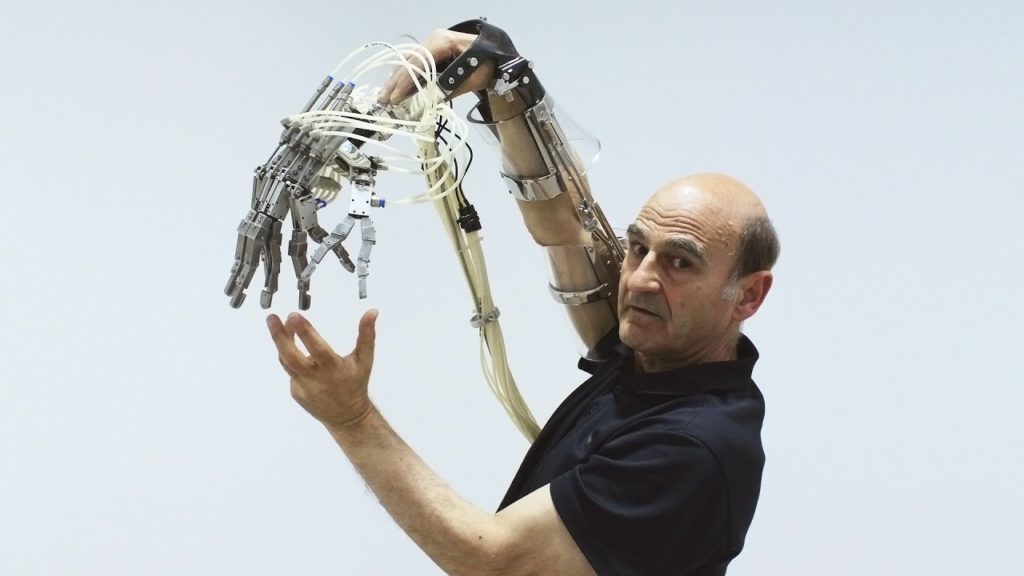
At the same time the design and unintended consequences of technology are creating new mass behaviours. And the productive forces of social media, peer production, hacker culture and maker culture are creating new possibilities for creation and expression. All of this changes how we relate to one another within society as part of the public.
This years CLICK festival, co-curated by Furtherfield sets out to explore questions related to identity and perceptions of reality in a world where humans and technology have merged in unexpected ways.
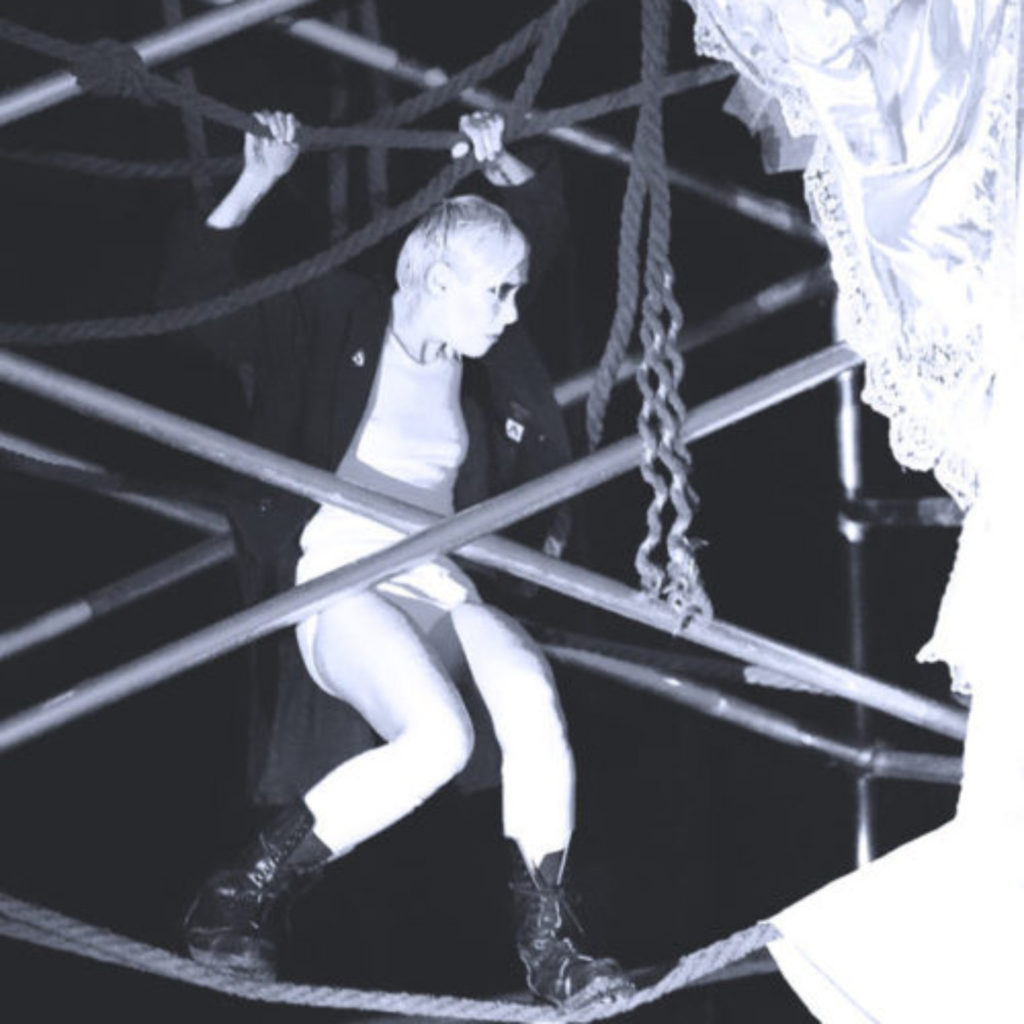
Virginia Barratt. VNS Matrix founder, cyberfeminist, Virginia Barratt is a PhD candidate at the University of Western Sydney in experimental poetics. Her doctoral topic is panic, engaging tensions between ontological meltdown/psychic deterritorialisation and ontological security. Panic is remediated from its pathological narrative and reimagined as a space of urgency/agency from which to act. Her work of performative text, SLICE, is forthcoming from Stein and Wilde.
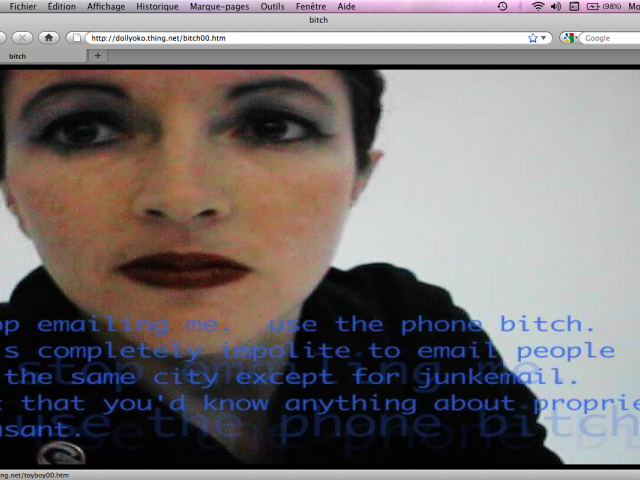
Francesca da Rimini explores the poetic and political possibilities of internet-enabled communication, collaborative experimentation and (tel)embodied experiences through projects such as her award-winning dollspace. As cyberfeminist VNS Matrix member she inserted slimy interfaces into Big Daddy Mainframe’s databanks, perturbing the (gendered) techno status quo. Her doctoral thesis at the University of Technology Sydney investigated cultural activism projects seeding radical imaginations in Jamaica, Hong Kong and the UK. A co-authored book, Disorder and the Disinformation Society: The Social Dynamics of Information, Networks and Software, will be out in May 2015.
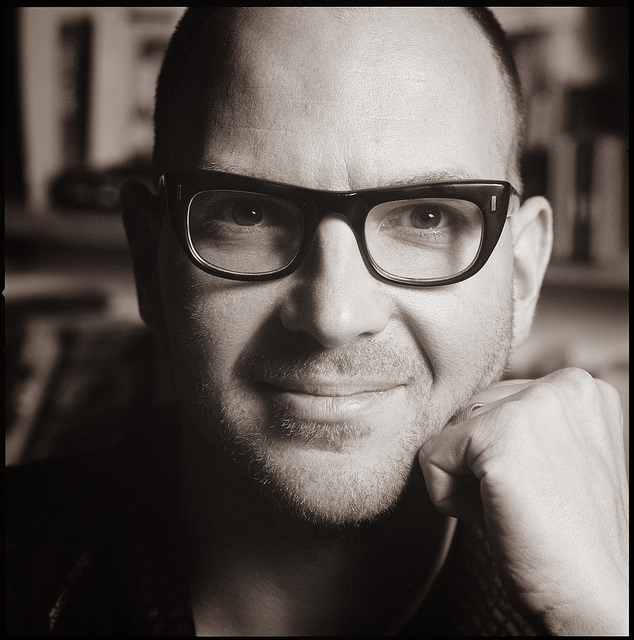
Cory Doctorow is assigned the label Internet philosopher, who writes, blogs and debates about online rights. Doctorow is convinced that copyright is an out-dated idea that damages the Internet and criminalizes peoples’ online actions improperly. According to Doctorow the current regulations of copyrights are obsolete by the unstoppable copy machine we call the Internet, which continues to produce samples of available online material such as pictures, music and text. Cory Doctorow is also an award-winning science fiction author and co-editor at boingboing.net.
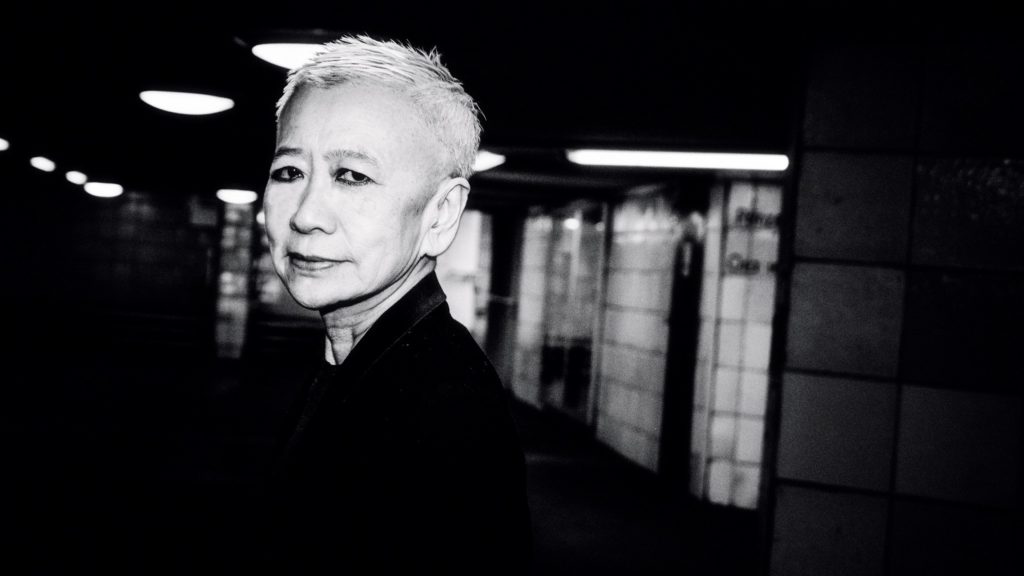
Shu Lea Cheang is known for her pioneering work in the field of media art and she is a true multidisciplinary and activist artist whose work spans from film to net art and performance (online, and in galleries) and video installation. Beginning the 1981 she was involved in the media activist’ collective ‘Paper Tiger TV’. Among her important multimedia works is the ‘Brandon Project’ (1998-99). Guggenheim Museum’s first official engagement with the then-emerging medium of internet art and one of the first works of this medium commissioned by a major institution. Following the production of the cyber porn film ‘I.K.U.’ (2000)(first porn film to be shown at the Sundance Festival) she focused on questions of copyrights and economy in media culture. Shu Lea Cheang holds a BA in history from the National Taiwan University, and a MA in film studies from New York University.
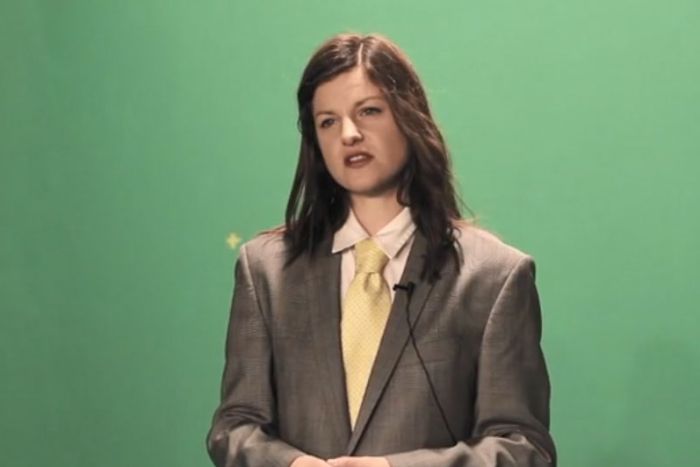
Jennifer Lyn Morone™ Inc (US). In a world before the Internet – information, transmission and dissemination was a controlled and regulated endeavour. The advent of the information superhighway, which is currently littered with social media sites run by billion dollar corporations, has blurred the lines of community ownership of one’s personal information and the individual. By incorporating herself she effectively wrestled the control of her digital self, back from corporations and took an active role in the sale of her information. Morone has been motivated by an underlying fascination with the relationship between technology, human beings, and the socio-economic political implications the melding of the two produce. That social concern, spurned Jennifer to create Jennifer Lyn Morone™ Inc.
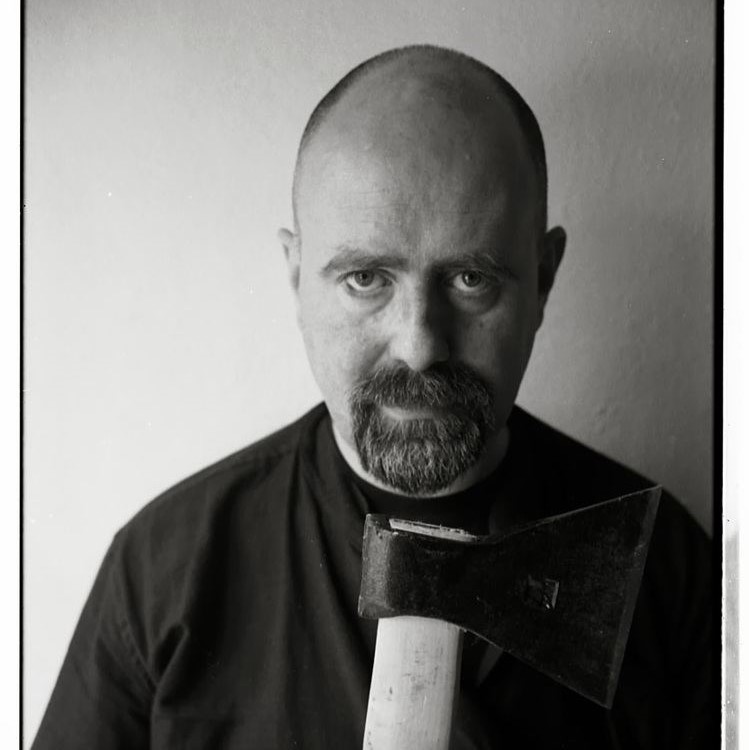
Andrew McKenzie (UK). The British Andrew McKenzie is the core of The Hafler Trio. His professional career began more than 3 decades ago and through the years he has worked with different professions such as audio designer, psychotherapist, hypnotherapist and workshop leader in Creative Thinking. McKenzie is also co-founder of Simply Superior where he teach creative processes that challenge the way you think in order to make you realize what you know, and are aware of not knowing. McKenzie’s projects and present goals all involve applying everything learned by experience over the last 48 years for the benefit of other. Andrew McKenzie defines himself as a mood engineer, specializing in changing people’s lives.
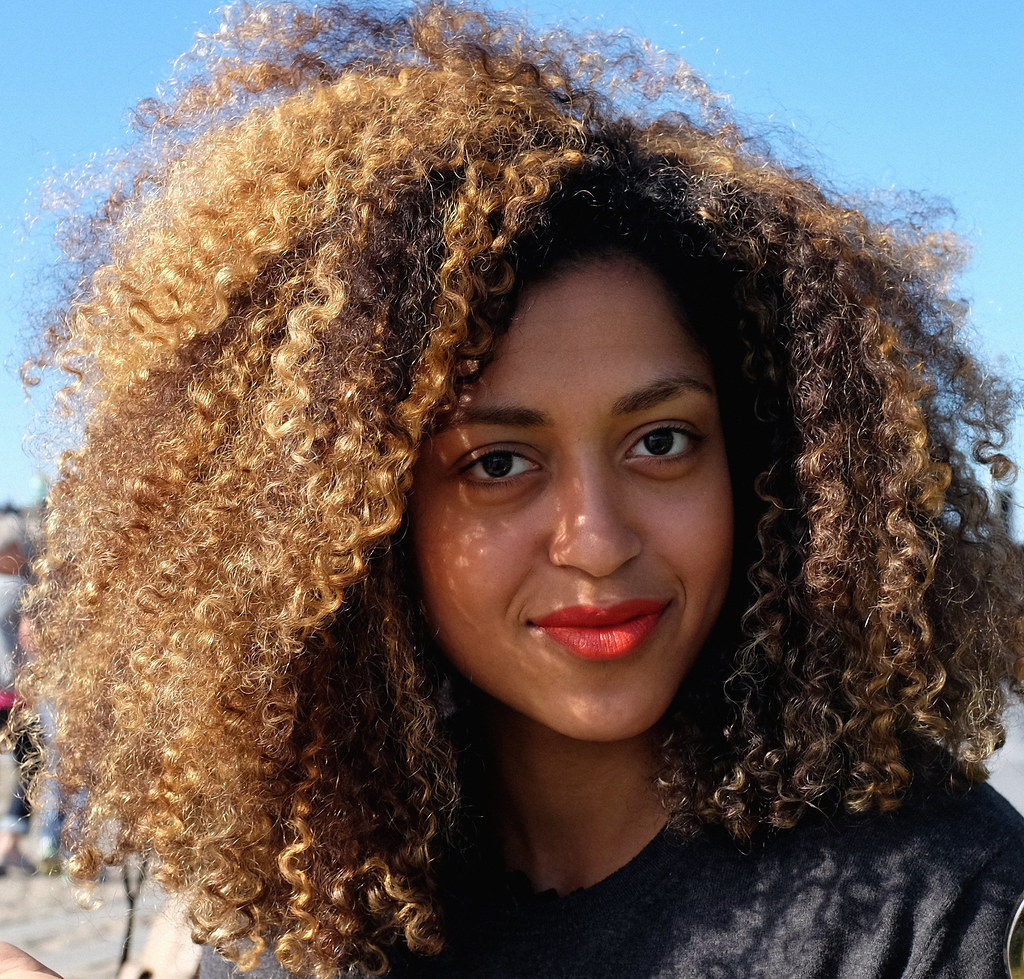
Angela Oguntala (US/DK) is a designer whose work sits at the intersection of technology, design, and futures studies. Currently, she heads up an innovation lab for Danish designer Eskild Hansen, envisioning and developing future focused products and scenarios. In 2014, she was chosen by a panel consisting of the United Nations ICT agency, Ars Electronica, and Hakuhodo (Japan) as one of the Future Innovators for the Future Innovators Summit at Ars Electronica – called on to give talks, exhibit her work, and collaborate on the theme ‘what it takes to change the future’.
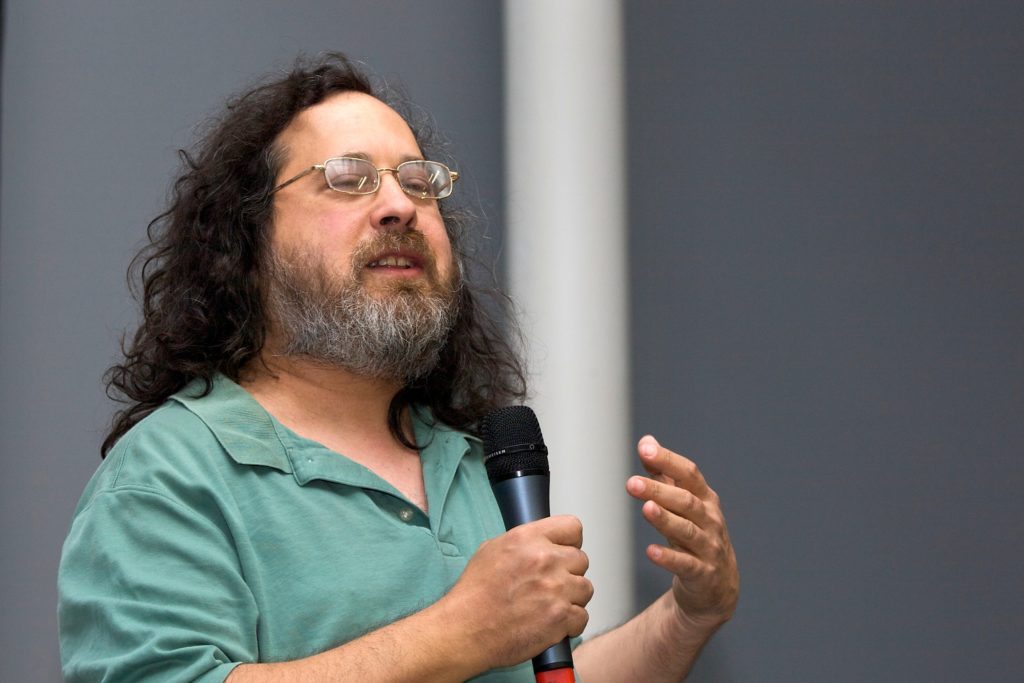
Dr. Richard Stallman launched the free software movement in 1983 and started the development of the GNU operating system (see www.gnu.org) in 1984. GNU is free software: everyone has the freedom to copy it and redistribute it, with or without changes. The GNU/Linux system, basically the GNU operating system with Linux added, is used on tens of millions of computers today. Stallman has received the ACM Grace Hopper Award, a MacArthur Foundation fellowship, the Electronic Frontier Foundation’s Pioneer Award, and the Takeda Award for Social/Economic Betterment, as well a several doctorates honoris causa, and has been inducted into the Internet Hall of Fame in 2013.
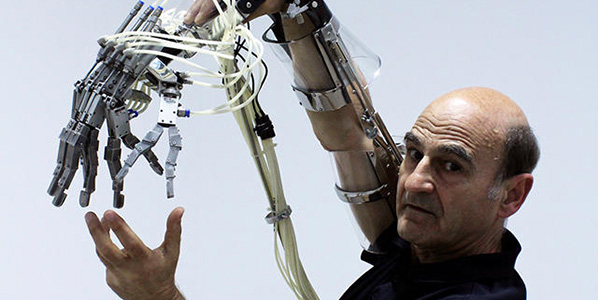
Stelarc (AU). An extra ear. A third arm. Six legs. A walking head. The Australian performance artist Stelarc is questioning and challenging whether or not it is possible to optimize the abilities of the human body. Stelarc has since the 1960s not hesitated to include advanced technology in his projects. After having examined several test on his own body, he announce a manifest claiming that the human body is out-dated and no longer meets the information society we live in. Stelarc uses his artwork to convey how the human body hypothetically will appear in the nearest future, if the technology is considered an extra dimension to the evolution.
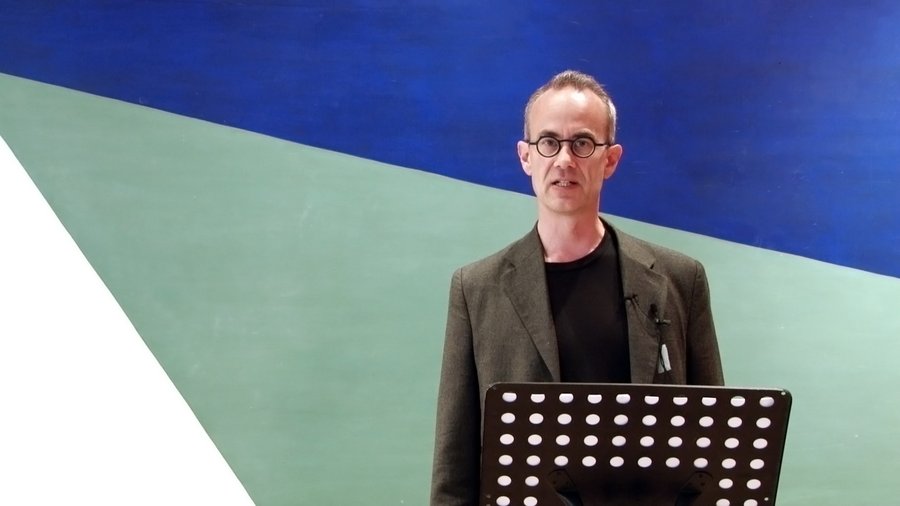
Jacob Wamberg, Professor of Art History at Aarhus University. Principal Investigator for Posthuman Aesthetics. In the posthuman field, he has co-edited The Posthuman Condition: Ethics, Aesthetics and Politics of Biotechnological Challenges (2010) with Mads Rosendahl Thomsen et al., and is now working on tracing the early contours of the posthuman paradigm (ca. 1900-1930), focusing on Dada, Futurism and Functionalism.
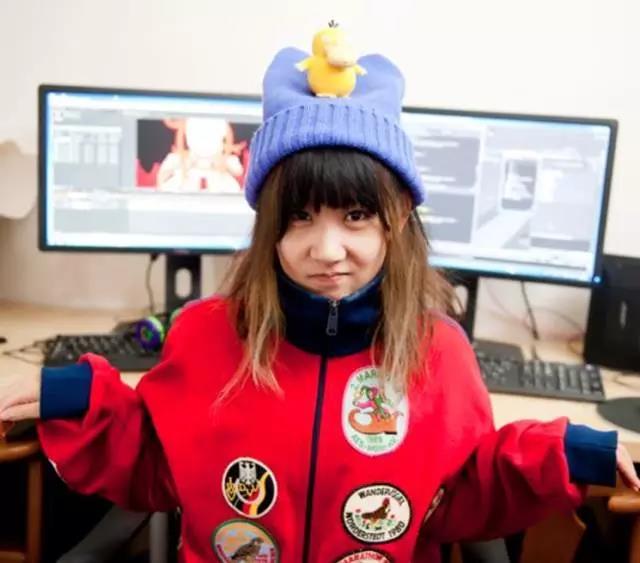
Shanghai based artist Lu Yang utilize a range of mediums known from pop culture such as Japanese manga and anime, online gaming, and sci-fi. She mixes these with discourses of neuroscience, biology, and religion, when she asks what it means to be human in the 21st century. Her depictions of the body, death, disease, neurological constructs, sexuality/asexuality, gender is unsentimental, confrontational and in their morbid humor not for the squeamish. Lu Yang is one of the most influential Chinese contemporary artists rising at the moment. She is a graduate from the China Academy of Art New Media. Her work has the last couple of years been internationally shown at museums and galleries and she has in 2014 been residency at AACC in New York and Symbiotica in Australia.
Please visit the CLICK website to purchase your ticket.
Ticket: 350 DKK. / Student: 250 DKK.
Explore and discuss the data surveillance processes at play in Finsbury Park through a process of rapid group ethnography. Arrive from 5.30pm at Furtherfield Commons, the community lab space in Finsbury Park, for a short introduction to the project. We will leave at 6pm for a 90 minute walk around the area followed by food and discussion.
Please bring:
This walkshop event is part of the research and development for the Museum of Contemporary Commodities.
The telluro-geo-psycho-modulator is the latest experiment in a series of playful explorations and elaborations of a general thesis extracted from the neuroscientist Michael Persinger’s work, that our brain states are modulated by the interference patterns created by our immersion in natural weak geomagnetic fields, and that such patterns cause the feeling of “anomalous experiences” including those of ghosts or god.
The workshop aims to begin equipping participants with a method to explore such potentialities between the earth and our psyches through the construction of an experimental interface (developed with Martin Howse).
A short introduction (20 min) to participants will briefly cover the theory of weak geo-magnetic field effects on psyche, including demonstrating an entirely synthetic electronic amplifier/helmet configuration. This will ground participants in both the practical and playful nature of the project.
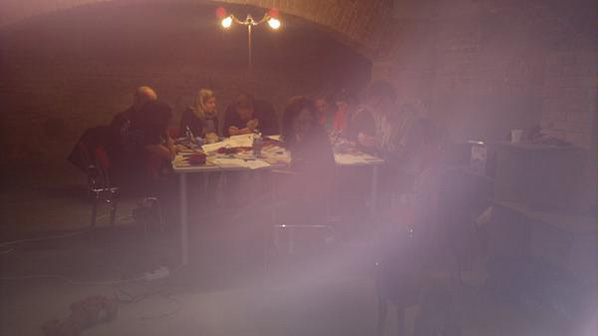
The brain is electro-chemical, and the existence of fundamental commonalities between all 7 billion human brains by which a similar physical stimulus can affect them is not a new concept – however, this workshop tests the idea that it is the induction by very low electromagnetic fields that disrupt a sense of self through the creation of anomalous experiences.
In the workshop particpants will build a simple circuit with which to test this thesis by connecting the earth’s telluric currents directly to our brains. On the second day we will then test the circuits outdoors in Epping Forest.
During the workshop and field trip participants will build electronic circuits and hand wind copper coils to construct:
The workshop is estimated to take around 4-6 hours for around 8 or so participants. All materials are supplied, however if participants have a soldering iron, please bring it along.
Each participant is asked to pay £15. This is to cover material costs – participants get to keep their circuits which can also be used with other circuits (eg. audio).
DOWNLOAD
Full exhibition programme
‘Interface Perception. The Cybernetic Mentality and Its Critics: Ubermorgen.com’ by Søren Bro Pold
SEE IMAGES FROM THE PRIVATE VIEW
Beyond the Interface is an exhibition and series of events presented by Furtherfield, where leading international contemporary artists explore the technical devices that pervade our lives.
“The interface is the sense organ of the computer, whereby it becomes part of human culture” – Søren Bro Pold1
How much of our life do we spend in front of screens? Typically young adults in the UK spend more than a third of their waking lives watching TV or using computers, smartphones and tablets.2 These glowing rectangles are just one interface through which we contribute to the growing global human-machine network.
Nowadays a multitude of sensors proliferate in these same devices along with the chips and transmitters that are embedded in all consumer goods. Our actions are tracked, our utterances and exchanges are monitored, and our behaviours inform the design of future media, systems and products. This is the cybernetic loop.
The interface is the boundary across which information is exchanged, causing a transformation in one or both sides of that boundary. Between individuals, corporations and states; beliefs and disciplines; components of computer systems; or machines and living beings. Interfaces have always been a site of control, hidden in plain view: symbolic, social or technological. Seduced and habituated, we forget to question how we are dominated and reprogrammed by the very facilities that are supposed to free us as part of the digital revolution. Lori Emerson suggests this is an “overwhelming push to disempower users/consumers with closed devices”.3
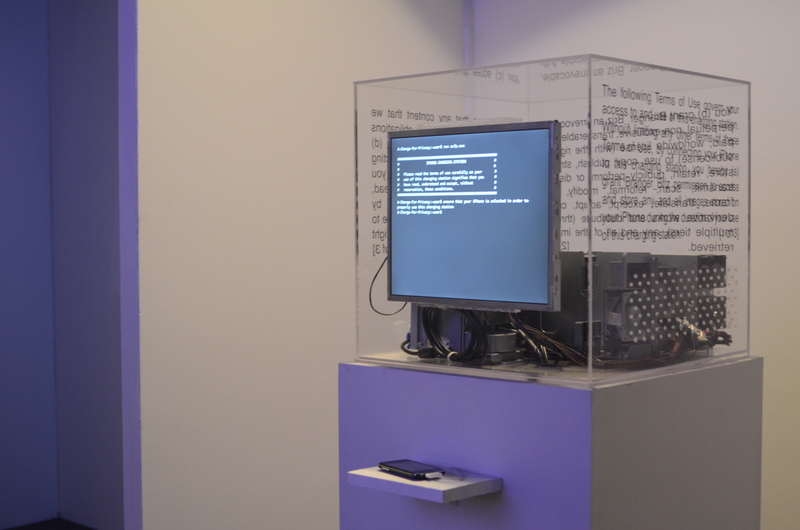
As you approach Furtherfield Gallery in the middle of London’s Finsbury Park, you will notice that the external walls have been transformed into an immersive installation of lush, rippling images of water lilies, leaves and other organic forms. Giverny Remediated is an installation of performative prints by Nathaniel Stern (US) continuing his ‘Compressionism’ series of work. Part of Stern’s Compressionist series, this work references Monet’s immersive painting installation Water Lilies, painted a century ago, only in this case the artist has strapped a hacked scanner to his body in order to create the works.

“Compressionism follows the trajectory of Impressionist painting, through Surrealism to Postmodernism, but rather than citing crises of representation, reality or simulation, my focus is on performing all three in relation to each other.”4
In a new commission Stern will create ‘Rippling Images of Finsbury Park’, a new public artwork created in the boating lake (which sits adjacent to Furtherfield Gallery). The artworks will be available to download by public USB installed in the Gallery walls as part of Dead Drop, the offline, anonymous, file sharing, peer to peer, network.5

Visitors can also download the essay that sets out many of the concepts behind this exhibition. ‘Interface Perception – The Cybernetic Mentality and Its Critics: ubermorgen.com’ by Søren Bro Pold (editor of Interface Criticism, Aesthetics Beyond Buttons) explores how we perceive interfaces and the role that art has to play in making technology more feelable.
Beyond The Interface – London is a remix of an exhibition co-curated by Furtherfield with Julian Stadon for ISMAR 2014, the International Symposium on Mixed and Augmented Reality, that took place in Munich in September 2014.
Happening alongside this exhibition
Scan the park
Dates June-July to be confirmed, Furtherfield Gallery
Workshops for all ages to hack your own scanner. Create your own rippling images of Finsbury Park based on the Nathaniel Stern commission. Also chance to show your work in Furtherfield Gallery. Please contact info@furtherfield.org to join the waiting list.
Telluro-geo-psycho-modulator workshop and field trip with Jonathan Kemp
2-3 May, Furtherfield Commons
How are our brain states modulated by the interference patterns created by our immersion in natural weak geomagnetic fields?
Living Assemblies – Design Your Silken Self
6 – 7 June, Furtherfield Commons
In partnership with The Arts Catalyst. A hands-on workshop with Veronica Ranner, investigating the coupling of the biological material silk, with digital technologies
WWW TV installation, Web We Want Festival
28-31 May, Southbank Centre, London
Featuring Grey Matter by Jennifer Chan and Facial Weaponization Communiqué: Fag Face by Zach Blas against a bank of monitors displaying videos found on the Web of contextual media, systems and products.
Back to the Future
Sunday 31 May 17:00 – 18:00, Queen Elizabeth Hall Front Room
To close the Web We Want festival, Jude Kelly CBE, Artistic Director of Southbank Centre is joined by Renata Avila (Web Foundation), Sarah T Gold (Alternet, WikiHouse Foundation) Ruth Catlow (Furtherfield) to recap the festival and look towards the next 25 years of the Web – what’s in store for the future and how can we make an impact on the shape of the Web?
Symposium: Designing Digital Creative Commons for the Performing Arts
27 June
Digital tools for communication, artistic collaboration, sharing and co-creation between artists, and creative audiences. Booking info to follow soon.
Museum of Contemporary Commodities
Running parallel to the exhibition is an artistic research project by Paula Crutchlow and Dr Ian Cook, exploring trade justice issues by presenting the things we buy today, as the heritage of tomorrow.
Walkshop led by data activist Dr Alison Powell
7 May 6-8.30pm, Furtherfield Commons
To find out more about the local retail environment, local commodities, trade-justice and data processes in Finsbury Park. As part of the Museum of Contemporary Commodities.
Commodity Culture social event
Saturday 13 June 11am-3pm, Furtherfield Commons
Drop-in for cake and a cup of something, and a chat about trade and exchange in Finsbury Park. Open to everyone. As part of the Museum of Contemporary Commodities.
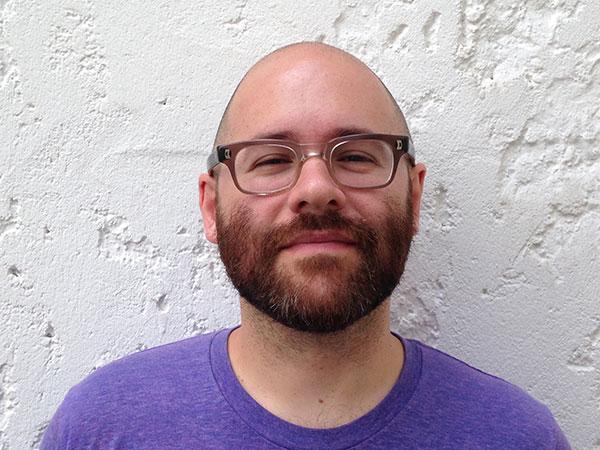
Zach Blas is an artist, writer, and curator whose work engages technology, queerness, and politics. Currently, he is an Assistant Professor in the Department of Art at the University at Buffalo. His work has been written about and featured in Art Review, Frieze, Art Papers, Hyperallergic, Rhizome, Mousse Magazine, The Atlantic, Al Jazeera America, The New Inquiry, Leonardo Electronic Almanac, and Wired. http://www.zachblas.info/
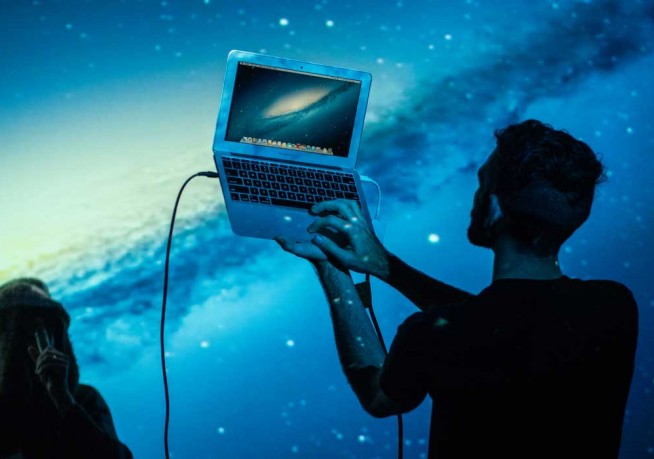
Branger_Briz are artists, educators && programmers bent on articulating our digital landscape creating memorable interactive projects for themselves && clients. To them contemporary culture means digital culture. They are driven by a desire to share our digital literacies, so their work tends to be public-facing && leverage new-media. They specialise in producing custom projects from concept >> design >> development >> launching/sharing && love every step in the process.
http://brangerbriz.com/
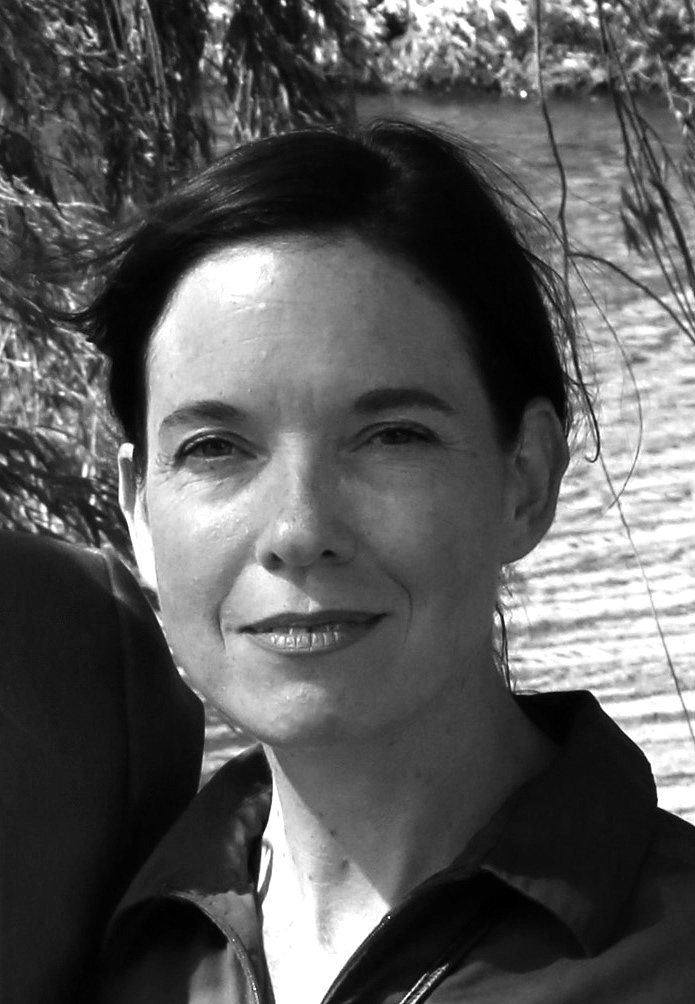
Mez Breeze is an Australian-based artist and practitioner of net.art, working primarily with code poetry, electronic literature, and digital multimedia works combining text, code, image and sound. Born Mary- Anne Breeze, she uses a number of avatar nicknames, including Mez and Netwurker. As of May 2014, Mez is the only digital writer who’s a non- USA citizen to have her comprehensive career archive (called “The Mez Breeze Papers”) housed at Duke University, through their David M. Rubenstein Rare Book & Manuscript Library.
http://mezbreezedesign.com/
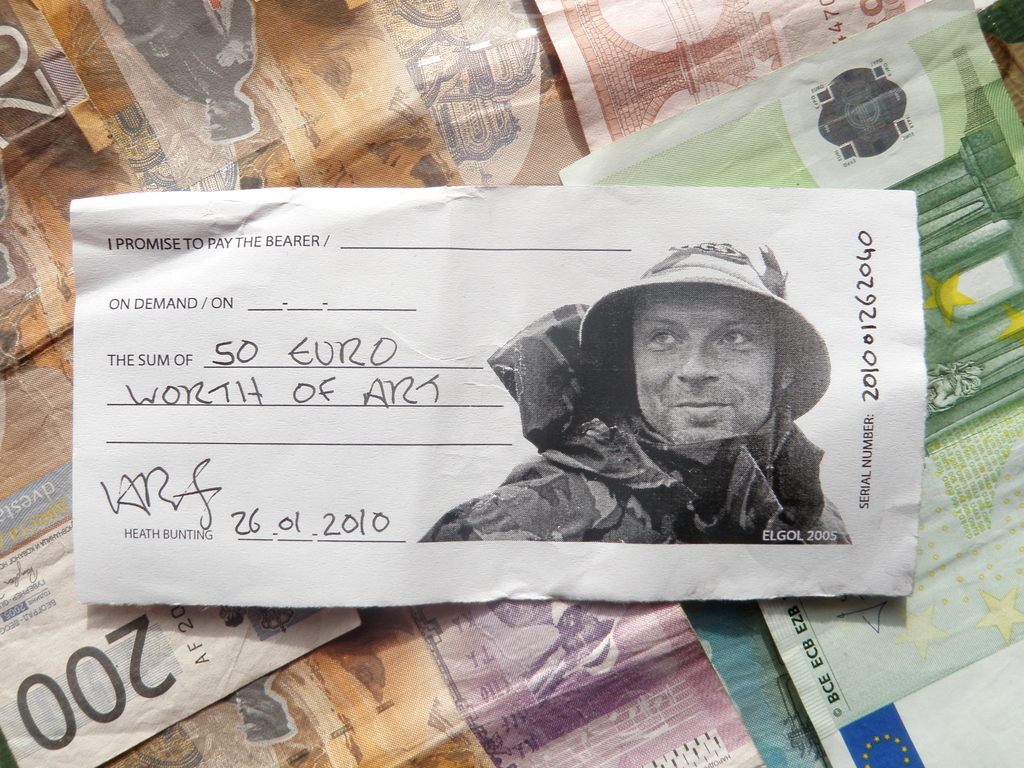
Heath Bunting was born a Buddhist in Wood Green, London, UK and is able to make himself laugh. (currently, reduced to only smile) He is a co-founder of both net.art and sport-art movements and is banned for life from entering the USA for his anti genetic work. His self taught and authentically independent work is direct and uncomplicated and has never been awarded a prize. He is both Britain’s most important practising artist and the World’s most famous computer artist.
http://www.irational.org/heath/
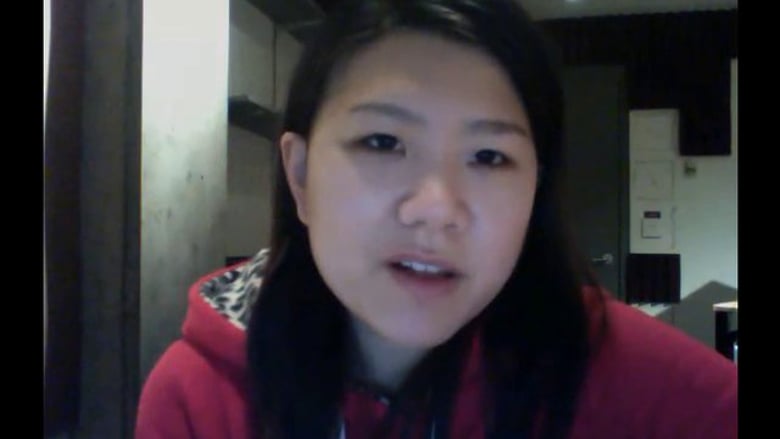
Jennifer Chan makes remix videos, gifs and websites that contend with gendered affects of media culture. Chan had solo presentations at the Marshall McLuhan Salon in the Embassy of Canada in Berlin for Transmediale 2013 (Germany), Future Gallery (Berlin), Images Festival (Toronto), Vox Populi (Philadelphia) and recently LTD (Los Angeles). She has a HBA in Communications, Culture, Information Technology from University of Toronto and a MFA in Art Video from Syracuse University. Chan was born in Ottawa, raised in Hong Kong, and is now based in Chicago. She co-organizes Dorkbot Chicago and helps women learn code at Girl Develop It. http://jennifer-chan.com/

Francesca da Rimini explores the poetic and political possibilities of collaborative (tel)embodied play. Early net projects include GashGirl, FleshMeat and the award-winning labyrinth dollspace. As cyberfeminist VNS Matrix member she inserted slimy interfaces into Big Daddy Mainframe’s databanks, perturbing the (gendered) techno status quo. Her doctoral thesis at the University of Technology Sydney investigated three diverse cultural activism projects seeding the formation of new collective subjects. She has co-authored Disorder and the Disinformation Society: The Social Dynamics of Information, Networks and Software (Routledge 2015). http://gashgirl.sysx.org
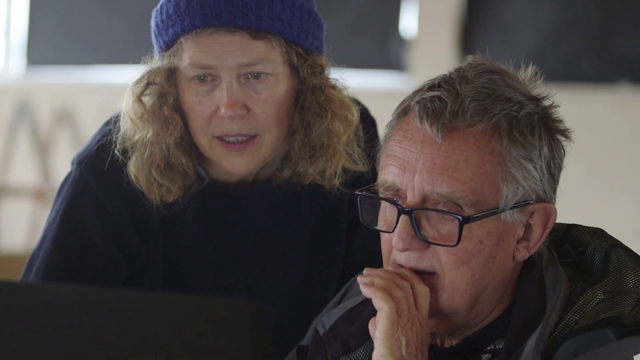
Genetic Moo (Nicola Schauerman and Tim Pickup) have been creating individual interactive art works for over 5 years. They create Microworlds, digital ecosystems and living installations that are always changing, mutating, and evolving in front of your eyes. Both gained Masters degrees from the Lansdown Centre for Electronic Arts. They have exhibited extensively in galleries, festivals and museums.
http://www.geneticmoo.com
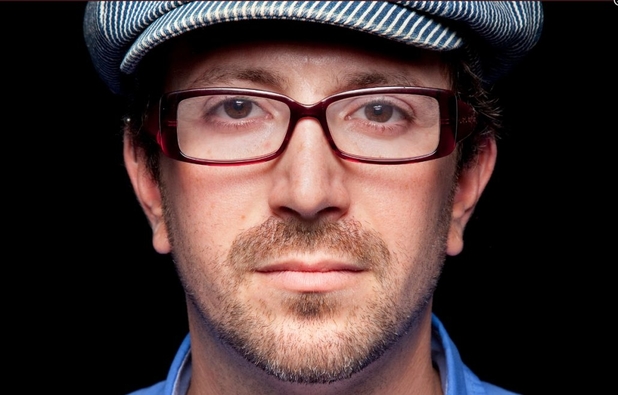
Nathaniel Stern is an artist and writer, Fulbright grantee and professor, interventionist and public citizen. He has produced and collaborated on projects ranging from ecological, participatory and online interventions, interactive, immersive and mixed reality environments, to prints, sculptures, videos, performances and hybrid forms.
His book, Interactive Art and Embodiment: The Implicit Body as Performance, takes a close look at the stakes for interactive and digital art, and his ongoing work in industry has helped launch dozens of new businesses, products and ideas.
http://nathanielstern.com
Beyond the Interface – Artists Panel
Web We Want Festival – Southbank Centre
28-31 May 2015
Chair – Ruth Catlow
Speakers (TBC)
EXHIBITION LOCATION
Furtherfield Gallery
McKenzie Pavilion, Finsbury Park
London N4 2NQ
T: +44 (0)20 8802 2827
E: info@furtherfield.org
Visiting information
PANEL LOCATION
Southbank Centre
Belvedere Road, London SE1 8XX
Directions
FOR MORE INFORMATION
Contact Ruth Catlow, Furtherfield
Part of Furtherfield Open Spots programme.
being being read being reading being read and reading beings
A twisted archive of the mind, language and technology project: Torque – presented via the lens of its current research: *reading*
Try:
Animated speed-reading software.
‘Code Karaoke’ with live-coding artist Yaxu (11th April).
The new ‘Outlier’ app that sonifies reading using algorithmic sentiment analysis, by Wesley Goatley.
Record a super-slo-mo reading and broadcast it across the park.
Pick-up for free and read:
A newspaper on privacy, surveillance and ‘being read’ in the age of big data and online lives.
Receipt artworks by James Wilkes (Wellcome Collection resident artist).
Or just soak up the rampant textuality of:
Live readings from performance artist Tim Etchells and remote performance by Yaxu (11th April) and artist writer Claire Potter, with virtual appearance by Mez Breeze (18th April).
Sound work entitled ‘Mind Twist’ by Dennis Oppenheim on the exterior of the gallery.
Experimental text works from Anna Barham, Tim Etchells and Imogen Stidworthy.
A new text-based cgi video artwork by Chris Boyd.
Sound work of Karl Heinz Jeron’s opera singing robot Sim Gishel.
Video and text works by Torque producers Nathan Jones and Sam Skinner, including commissioned score by musician Oliver Coates.
The launch of a new book entitled ‘The Act of Reading’, comprising new essays and artworks on the subject, including a new text by reader/author extraordinaire Katherine Hayles, entitled, ‘Nonconscious Cognition and Jess Stoner’s I have Blinded Myself Writing This’ and further contributions from: Garrett Stewart, Soenke Zehle, Erica Scourti, Stephen Fortune, Esther Leslie, Nina Power, Charles Bernstein, Claire Potter, James Wilkes, Eleanor Rees, Anna Barham and others.
What does it all mean?… well come on down, bury your head in the book, pdf, audio, sentiment analysed and sonified, or speed reading versions… and find out!
It may all sound a bit strange, but that’s the world we live in now and how we read today! 😉
Live Reading #1 – Tim Etchells and Yaxu, 3pm, Saturday 11th April. (Free)
Live Reading #2 – Claire Potter and Mez Breeze, 3pm Saturday 18th April. (Free)
(Yaxu and Mez Breeze remote/online performance)
Furtherfield Gallery
McKenzie Pavilion, Finsbury Park
London N4 2NQ
T: +44 (0)20 8802 2827
E: info@furtherfield.org
Furtherfield Gallery is supported by Haringey Council and Arts Council England
Torque is a transdisciplinary project by artists Nathan Jones and Sam Skinner, that explores the twisting of mind, language and technology, through publications, symposia, performance, workshops and installation.
At Furtherfield, each of the three gallery spaces will be transformed into a three-dimensional manifestation and archive of the three publications and public research Torque have produced to date. The gallery will become a hypermedia reading room and examination of both reading and the Torque project itself, giving members of the public a deep and varying view of the pressures impacting our relationship to language, and in particular – reading – as it occurs today.
Room 1 will be dedicated to the Torque #1 publication.
Room 2 will present The Opticon newspaper – produced over two days at Tate Liverpool, focusing on themes of privacy and surveillance, in particular machinic reading, big data and the phenomenology of ‘being read’. Comprising contributions from over 100 gallery visitors, poets, artist Erica Scourti and professor of social media Christian Fuchs.
Room 3 will launch a new transdisciplinary digital and print publication exploring reading today, and the impact of technology upon it, following The Act of Reading symposium at FACT, Liverpool and a performance event at Static Gallery. This room will also feature new video works by Jones and Skinner synthesizing and investigating reading-related pathologies and pedagogical systems.
Jones and Skinner will be in the gallery throughout the exhibition presenting and speaking about their work, and developing new works informed by their experiences and conversations.
Torque project tumblr here
Free download of Torque #1 book and printed edition available here.
Digital version of The Opticon newspaper here
Torque is supported by an Arts Council England Grants for the Arts, Tate Liverpool and FACT.
An International Online Symposium on Innovation in Networked Research, Artistic Production and Teaching in the Arts
Opening Reception: Tuesday, March 31, 11:00 AM – 1:00 PM BST (British Summer Time)
For online access login to Adobe Connect as a Guest: http://ntu.adobeconnect.com/symposium2015
11:00 AM – 11:30 AM (BST)
Welcoming Remarks from Singapore: Symposium co-chairs, Randall Packer & Vibeke Sorensen
Welcoming Remarks from London: Furtherfield co-founders & co-directors, Ruth Catlow & Marc Garrett
11:30 AM – 12:30 PM (BST)
@ Home With Furtherfield: Join Furtherfield co-directors Ruth Catlow & Marc Garrett for an intimate telematic gathering of Internet artist interviews & conversation with: Nick Briz, Joseph Chiocchi, Helen Varley Jamieson, Maxime Marion, Juergen Trautwein, Joana Moll.
12:30 PM – 1:00 PM (BST)
Live Webcam Cyberformance: we r now[here] is a cyberformance about nowhere and somewhere: the “nowhere” of the Internet becomes “now” and “here” through our virtual presence. Created by Helen Varley Jamieson and performed by NTU students.
For more information visit the Art of the Networked Practice | Online Symposium website.
Part of Furtherfield Open Spots programme.
The Visual Artists of the Balearic Islands (AAVIB), Spain, launched the activist campaign and contra contest ‘#Young_Fraud’ in September 2014. The contest is meant as creative weapon for influencing the politicians on their responsibility within arts, creativity and culture.
The awarded artists and the promoters of the campaign will be at Furtherfield Gallery presenting the project and showcasing the artworks. To celebrate the occasion, you are invited to create and discover the most stylish mediterranean Fraud Tapas and dance to the rhythms of unprejudiced Sounds of the band: JANSKY – a blend of danceable electrotechno, beatbox flute and spoken word, which has been described by Shremy’s Law (UK) as “a breath of fresh air in the world of electronica”.
Schedule:
12.00 Sparkling bubble Fraudstyle drinks
1PM Project presentation
1.30PM Collective elaboration: Unprejudiced mediterranean Speculative Fraud_TAPAS
3.30PM Chillin’ Sounds, full of the most stylish beats from Balearic Electronica with the band: JANSKY
This project developed an artistic action which aimed to fill in the void left by the recent cuts in public funding.
It also highlighted and demanded compensation with regard to the ‘Young Art Visual Arts’ contest, which ceased in the 2012, after complaints concerning the poor professional conditions of the artists who participated.
‘Frau_ Jove’ in Catalan is translated as ‘young fraud’. There is a reference in the title to the surname of Maria J. Frau, head officer of the Cultural Department of the Government.
The campaign has achieved extraordinary support from international art organisations such as Furtherfield Gallery (London), Matadero (Madrid), and Hangar Laboratory of Creation (Barcelona). The media also played an active role in supporting and promoting the project as well as the UAAV (in English, Union of Associations of Spanish Visual Artists).
An international jury was formed and composed of Chus Martínez, curator of the Catalonia pavilion in Venècia Biennale 2015, former director of El Museo del Barrio of New York and current director of the Academy of Art and Design in Basel (Switzerland); the critic and Catalan curator and promoter of A-Desk, David G. Torres; the art historian Piedad Solans; and the artist Bartomeu Sastre.
Of the 32 portfolios presented, the jury selected Isabel Servera and Guillem Portell who will be exhibiting their work in the galleries of Hangar, Matadero and Furtherfield.
National Radio RNE3 relocated from Madrid to Mallorca to broadcast the decision of the jury in a special 2 hour programme. The #AntiFrau_Fest line up featured sounds from the best Balearic electronic music creators: JANSKY, PEDRO TROZ, CAP DE TURC, POAL & DEFLED.
http://fossbox.org.uk/content/sex-and-security
A two-day event by Fossbox in collaboration with Furtherfield and Autonomous Tech Fetish around surveillance, gender and society. The event will consist of a practical privacy workshop followed by a day of discussion, making and performance. Open to everyone, women/LGBTQ especially welcome.
Practical workshop on privacy and security: 7 March, 11am
A focused exploration of the issues around sexuality, gender and surveillance. Visit this Meetup Group to join.
Discussion workshops – sex and surveillance: 22 March, 11am
A workshop using play, performance and discussion to develop a better understanding and a more collectivised civil response around these issues. Visit this Meetup Group to join.
If you’re hazy about how digital mass surveillance works and what you can do, you’ll get most out of it by attending both workshops. If you already know about the tech side, you might want to help out at the practical workshop!
The ‘Internet of Things’ (IoT) is heralded as a quantum leap in economy, society, culture and government — yet most people outside of the tech and creative industries struggle to get their heads around what this really means. A number of recent scandals involving ‘smart’ devices as well as Snowden’s revelations have highlighted the huge and slightly scary security and privacy issues at the heart of our brave, new, cyberworld. ICO and Offcom are acutely aware that this pervasive surveillance is making a mockery of current EU/UK privacy legislation which urgently needs an overhaul. Policy, however, prioritises rapid development of IoT over protecting sensitive data calling for ‘transparency’ rather than restriction of how our data can be collected and used. Meanwhile, the corporate and governmental chorus that law-abiding citizens have nothing to worry about from pervasive surveillance is wearing thinner every day.
As the digital domain begins to bleed into our ordinary, physical surroundings, the government is telling us that we don’t need privacy and even wants to outlaw the secure encryption which can protect our private life from being used for invasive profiling, ending up on public websites and social media, or on sale in the data black market. Cameron has stated that there should be absolutely no communication or data which the government can’t read. Is it really OK for corporations to compile and sell personal profiles so intimate that they know more about us than our loved ones do? Does the government really have a right to gather and keep our every private thought to be used in profiling if we ever do fall foul of the state for whatever reason? There is already a discussion of the ‘militarisation’ of social science and ‘predictive policing‘ – we’ve seen in the past which vulnerable groups are most likely to be targeted for profiling. What about the constant monitoring and manipulation of movement around cities. What if our government takes even more steps to the right whilst conditions get harder for most of the population. What if there were mass protests? What if a future right-wing government outside the EU decided to outlaw LGBTQ? What might these ubiquitous personal dossiers and pervasive control of urban space be used for then? Are we sleepwalking into a society where everyone is always-already a criminal and non-conformity or protest is no longer an option?
These developments are going to affect everyone but there are many issues around online security which will have particular resonances for women and queers and may affect us in very specific ways. There has been a lot of discussion and press about gender-trolling, ‘revenge porn‘, ‘gamergate‘ and Wikipedia, the ‘quantified self‘, FB real-names policy and binary sex dropdown lists in databases — to name but a few. However, there is not very much discussion about how these issues all fit together and what the overall impact of this production of digitised social space, hyper-self-awareness, and networked sexuality might be for women, queers, and marginalised groups. How does corporate and government surveillance and profiling affect our sense of self, our personal and public spaces, and our freedom to speak and organise with other women and queers? Where is the line between design which facilitates us and design which manipulates us?
The issues are hard to wrap your head around and keeping your private life private requires the commitment of a little effort — it can interrupt the manicured flow of our digital ‘user experience’. You might not really want to know what happens after you push the little button that says ‘send’ but staying safe online in 2015 and beyond is going to get a little bit more challenging. Not caring is going to be an increasingly risky option.
Technical solutions are needed, and a small army of ‘infosec’ practitioners, strong encryption, and hardened systems. However, this won’t be enough because USA, UK and EU governments are more concerned with corporate profits and the security of their own power than with the safety and wellbeing of civil society. Alongside our own private actions to secure our own data and the efforts of civil-society-hackers, non-profits and NGOs striving to keep us informed, skilled, and safe, we also need an aware and empowered civil society response. But is ‘smart’ economy an all-round bad idea purely to be defended against or is there the possibility of ‘smart’ technology and smart systems co-designed by and for women themselves and a respectful way to manage ‘big data’?
This is the fourth and final part of the Digital Futures: Money No Object series of events, conceived of in partnership with Furtherfield.
The session will be a currency prototyping brainstorm, where we will explore whether a currency or alternative exchange system might be developed for and by a distributed network of artists to support and promote experimental, open and free practices (on the understanding that anyone might call themselves an artist). Would it be a distributed cryptocurrency or networked version of a local currency? Could such a system generate, construct/create and circulate value?
It will be facilitated by Brett Scott, author of The Heretic’s Guide to Global Finance: Hacking the Future of Money, and will be followed by an evening public showcase of the work produced during this session.
PROTYPING WORKSHOP, 4pm – 6pm
Limited places, please contact Irini, i.papadimitriou(at)vam.ac.uk if you would like to attend
Evening Showcase from 6.30pm – 8.00pm
Please register here if you’d like to attend
This marks the conclusion of a series of stimulating discussions and presentations around alternative currencies and their politics by artists, creative technologists and theorists held at both the V&A and The White Building over the last few months. Topics have included technology on future currency and transactions as well as questions relating to how value may be manifested in years to come.
Money No Object is Heidi Hinder’s practice-based research project that took place at the V&A, supported by Creativeworks London and UnLtd. Money No Object is exploring the impact of technology on future currency and transactions as well as questions relating to how value may be manifested in years to come.
Digital Futures is a monthly meetup and open platform for the display and discussion of work by researchers and creative practitioners working with digital media, interactive art, digital design, science and more. Since October 2014 Digital Futures is being hosted and co-curated by The White Building. The White Building, run by SPACE, is an incubator for discursive and innovative thought, it serves as a testing ground and creative lab for artists and creatives whose work engages with technology.
Please register here if you’d like to attend the event. To attent the prototyping workshop please contact Irini at, i.papadimitriou(at)vam.ac.uk
The White Building
Queen’s Yard, White Post Lane
#Unit 7
E9 5EN London
United Kingdom
Since the establishment of the World Wide Web, questions have proliferated around the possibilities, value and collectability of its associated contemporary art forms.
The web provides a single site for the creation (and sometimes co-creation), distribution, review and remix of an art form that takes as its medium: code, images, text, video, music and social relations. Historically, the value of an artwork resided in its uniqueness. Now artists, audiences, curators and collectors grapple with an infinitely replicable and distributable art form. This panel discusses an electrifying cluster of controversies: the subversive intentions and emancipatory motivations of many media artists; the needs and concerns of public art collectors and conservators; the opportunities for private collectors and the interests of high art market speculation.
This panel is chaired by Ruth Catlow, artist, co-founder and co-director Furtherfield, established in 1997 for art, technology and social change.
Steve Fletcher – Co-founder of Carroll / Fletcher, a recently established commercial gallery specialising in contemporary socio-political, cultural, scientific and technological themes
Lindsay Taylor – Salford University Art Curator who established the first UK public digital arts collection at the Harris Museum and Art Gallery
Please visit this page to register for this talk.
1) purified social process. Screenshot from VisitorsStudio, by Furtherfield 2011
2) The Lover by James Coupe. Surveillance video installation commissioned by Harris Museum, 2011
V&A Digital Futures is a monthly meetup and open platform for the display and discussion of work by students, researchers and creative practitioners working with digital media, interactive art, digital design, science and more. The programme offers participants opportunities to show and discuss work, but also a platform to network and nurture discussion and future collaborations. This is an open mapping session following on from the Digital Futures: Money No Object event that was held in October. The event will look at alternative currencies and value systems and will act as an evaluation and gathering session before a larger prototyping event that will follow in January 2015.
Limited places, please contact Irini Papadimitriou if you would like to attend on i.papadimitriou(at)vam.ac.uk – more info on the event page on EventBrite.
Ruth Catlow, artist, Furtherfield co-founder and artistic director, Play Your Place co-creator – http://furtherfield.org, http://furtherfield.org/gallery, http://www.playyourplace.co.uk
Heidi Hinder, artist-maker and researcher – http://www.moneynoobject.co.uk
Marta Owczarek, Brixton Pound Communications Manager and activist @martalucysummer
Carlos Noronha Feio, artist – http://www.carlosnoronhafeio.co.uk
Bill Balaskas, artist – http://www.billbalaskas.com
Gerard Briscoe, researcher, Queen Mary University London – http://webspace.qmul.ac.uk/gbriscoe/site/Home.html
The White Building
Queen’s Yard, White Post Ln
#Unit 7
E9 5EN London
United Kingdom
Since October 2014 Digital Futures is being hosted and co-curated by The White Building. The White Building, run by SPACE, is an incubator for discursive and innovative thought, it serves as a testing ground and creative lab for artists and creatives whose work engages with technology. http://thewhitebuilding.org.uk
Join us for a free 2 day public game-jam event at Southbank Centre. Create online computer platform games for the extraordinary evolution of our species… or for total catastrophe… it’s our choice.
This launches a year of game-building online and at Furtherfield Commons, the community labspace in Finsbury Park, London N4.
@PlayYourPlace & @furtherfield
#webwewantfest
ruth.catlow[at]furtherfield.org
Join us to draw, make and play games for the Web We Want: to defend freedom of access and a life free from surveillance and data exploitation; to distribute knowledge and resources for the benefit of millions of people and their enduring communities.
As part of the Tim Berners Lee campaign for a Magna Carta for the web, we invite you to join us in a public drawing and game building event to work out what is most important for us all in the future of the web.
We will devise tactics and tools. Our drawings – avatars, background settings, obstacles, rewards – will form the building blocks of computer platform games of the Web We Want. Afterwards anyone can join in online from their homes, workplaces, universities and clubs to remix, redistribute and play games, or to build their own from scratch.
In 2015 Furtherfield will continue to develop games with others, hosting game-building workshops, gatherings and public events to build games for the future of the distributed web at Furtherfield Commons, the community labspace in Finsbury Park, London N4.
Play Your Place is an open artwork and game-building game created by artists, programmers, and imaginative citizens to develop a collective vision for a richer, emancipated life for all beings in all places.
People bring their expertise to game-jam events and through two imaginative world-forming activities: drawing and play. They swap their experiences and aspirations; they pinpoint obstacles to a good life, the tools by which these are overcome, and the rewards of success. In the process they create the resources and rules for polemical online platform games that can then be tested, remixed, relished and redistributed in epic play-sessions.
Where once the boundaries between the worlds of atoms and bits were marked by screens and passwords, chips and implants are now on or in our bodies, devices and appliances. The architecture and maintenance of the web, and the infrastructures of the Internet that underpin it are of consequence to us all. We are in the web, we are its users. The web is in us and upon us.
Play Your Place grew from conversations between artists, writers and Southend planners and residents about how people could get involved in planning decisions in their town. This formed the foundation for an artists’ residency for Ruth Catlow (Furtherfield, UK) and Dr Mary Flanagan (Tiltfactor, USA) and author Rachel Lichtenstein (UK) hosted by Metal in 2010. We have since created games about places with residents and visitors to Southend, South Westminster, Classroom N4 and the Alt_Cph ‘14 alternative arts festival in Copenhagen.
Play Your Place exists as a digital artwork prototype and is published as a FOSS game platform to Github under a GNU Affero General Public License. The game is developed by Soda with Ruth Catlow and Mary Flanagan, using HTML5 to enable accessible, cross platform in browser creation and play without plugins etc.
Planned future developments will enable: a simple entry level mode – especially for use with mobile devices – with guided level creation to introduce players to game creation and an advanced functionality mode for experienced users including a scripting tool; located big and open data integration linking data, games and comments, integrating into mapping apps and having located data effect gameplay; optimized physics enabling climbing, carrying, pushing, throwing etc.
Contact: gabrielle@andfestival.org.uk
Hashtag: #6pmuk
Participants: TBC
VISITING INFORMATION
DOWNLOAD PRESS RELEASE
6PM YLT is a networked, distributed, one night contemporary art event, which takes place simultaneously in different locations, coordinated from one central venue, and documented online via a web application.
Furtherfield is hosting the first UK event, chosen for its history of critical engagement with networked culture.
At 5.30 pm, Domenico Quaranta and Fabio Paris from Link Art Center will talk through their ambitions and inspiration for the project. For the duration of the event, participating venues and their audiences across the UK will be testing the platform by sharing documentation images and videos of their events under the same hashtag, #6pmuk. The audience at Furtherfield will be able to enjoy the live feed from all the locations involved, and to discuss the project with us.
Artists, technologists, network thinkers and makers are invited to join us to learn more about the conceptual framework for 6PM YLT and talk through how it can evolve, in anticipation of its European launch in July. Food and drinks will be available!
6PMYLT is a format conceived by the Link Art Center and developed in collaboration with Abandon Normal Devices (AND) and Gummy Industries. On 22 July 6 PM YOUR LOCAL TIME launches across Europe.
6 PM YOUR LOCAL TIME (6PM YLT) is a networked, distributed, one night contemporary art event taking place simultaneously in different locations, coordinated from one central venue and documented online via a web application. The locations (institutions, non-profit spaces, commercial galleries, artist’s studios) will address their local audience and, through the dedicated web platform, a global audience. While visiting your local 6PM YLT event(s) will allow you to experience a single portion first hand, the only way to get the whole picture will be to access its online documentation: all exhibits will be documented and shared in real time by organizers and audience on the dedicated web platform, thanks to a web application aggregating content from different social platforms.
The lead partner will coordinate the event from one central venue, and will put on display the event itself, screening the live feed from all the locations involved, and eventually making additional documentation available in different ways, ie. arranging video conferences with specific venues, or printing out images in real time and displaying them as a wall installation.
After the launch event, 6PMYLT will become an open format available for anyone to utilise. The lead partners will maintain the platform and support the coordination of events all around the world.
Today, art is mostly experienced through its documentation. Even if globalization made it easier and cheaper to organize exhibitions, ship artworks, invite artists and move audiences to any part of the world, the excess of cultural activity all around the world makes it impossible to be everywhere at the same time. Bits are still faster and cheaper than atoms, and we can enjoy them more comfortably on different devices. The border between first hand and second hand experience, reality and media documentation becomes increasingly blurred, with a profound impact on the way art is produced and documented.
Almost every art-addict is now using social networks like Instagram, Twitter and Facebook to take photographs during art exhibitions and to share them with their contacts. The pictures already have some meta-data that we could use to trace them and to collect them: #hashtags, captions, geographical data, publishing date. By suggesting the use of a given #hashtag to all the organizers and audience participants, we can collect and show all this documentation on a dedicated web platform. Our software will automatically collect all the pictures, tweets, and public Facebook produced about the 6PM YLT event, and will show them in a single gallery.
6PMYLT is a format conceived by the Link Art Center and developed in collaboration with Abandon Normal Devices (AND) and Gummy Industries.
The Link Center for the Arts of the Information Age (Link Art Center) is a no-profit organization promoting artistic research with new technologies and critical reflections on the core issues of the information age: it organizes exhibitions, events, conferences and workshops, publishes books, forges partnerships with private and institutional partners and networks with similar organizations worldwide. More info: www.linkartcenter.eu
Abandon Normal Devices (AND) presents world-class artists at the frontiers of art, digital culture and new cinema. A UK based organisation it is a catalyst for new approaches to art-making and digital invention, commissioning public realm works, exhibitions, research projects and a roaming biennial festival. AND has commissioned work from Carolee Schneeman, Krystoph Wodischko, Gillian Wearing, Phil Collins, Rafael Lozano Hemmer and the Yes Men (to name but a few). More info: www.andfestival.org.uk/
Gummy Industries is an online communication and marketing agency based in Brescia, Italy. Their work ranges from consultancy to design and (web) development. They usually work with medium business and large companies, with a strong focus on the fashion industry. More info: http://gummyindustries.com/
Furtherfield was founded by artists Ruth Catlow and Marc Garrett in 1997 and is been sustained by the work of its community; specialist and amateur artists, activists, thinkers, and technologists, who, together cultivate open, critical contexts for making and thinking. Furtherfield is now a dynamic, creative and social nerve centre where upwards of 26,000 contributors worldwide have built a visionary culture around co-creation – swapping and sharing code, music, images, video and ideas. More info: www.furtherfield.org.
Concept: Fabio Paris
Production: Link Art Center, Brescia, IT
Co-production: Abandon Normal Devices, Manchester, UK
Website and software development: Gummy Industries, Brescia, IT
Funded by: Creative Europe; Art Council England
6PM YOUR LOCAL TIME is realized in the framework of Masters & Servers, a joint project by Aksioma (SI), Drugo more (HR), Abandon Normal Devices (UK), Link Art Center (IT) and d-i-n-a / The Influencers (ES) that was recently awarded with a Creative Europe 2014 – 2020 grant. For 24 months from now, Masters & Servers will explore networked culture in the post-digital age.
Furtherfield Gallery is pleased to host One Minute Volume 8, a new series of shorts curated by filmmaker Kerry Baldry. The screening is accompanied by One Minute Remix pt. 2, a selection of moving images from One Minute Volumes 1-7.
SEE IMAGES FROM THE PRIVATE VIEW
Please share your one second short too – for a collective one minute short video #1sv we need 60 videos before it 23rd November @furtherfield on Twitter and Instagram
Contact: info@furtherfield.org
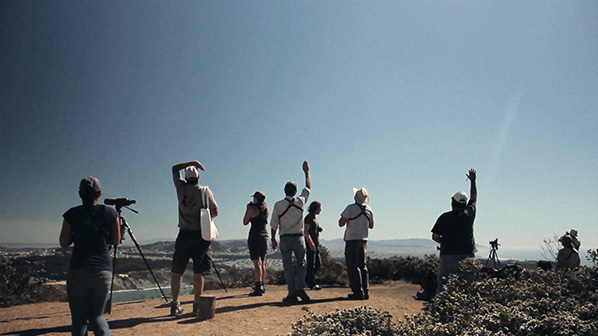
One Minute Volume 8 is the latest in the series of programmes of artists’ moving image compiled/curated by artist filmmaker Kerry Baldry.
Previous programmes (Volumes 1 – 7) have been screened around the world, showing in galleries and spaces such as hotel rooms in Hong Kong, warehouses in Sydney, shopping centres in Leeds, barns in The Snowdonia National Park through to international museums, film festivals and art galleries.
The One Minutes contain an eclectic mix of approaches, techniques, media and processes, all having one thing in common – that they have been edited within the time limit of 60 seconds.
Screening alongside One Minute Volume 8 is a specially edited One Minute Remix for Furtherfield Gallery which includes work by artists in the previous programmes.
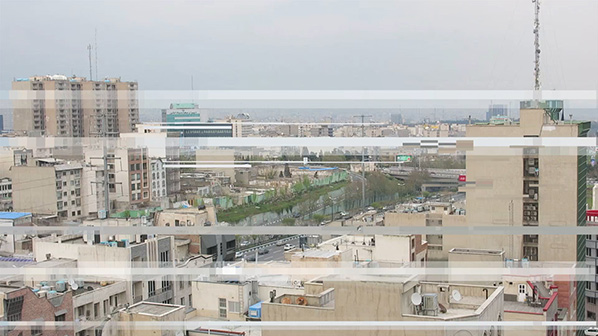
Paul Rooney, Nicky Hamlyn, Claire Morales, Nick Jordan, Gordon Dawson, Sana Ghobbeh, Tony Hill, Alex Pearl, Sam Meech, Greg Pope, Kayla Parker and Stuart Moore, Philip Sanderson, Martin Pickles, Guy Sherwin, Olga Jurgenson, Kerry Baldry, Tansy Spinks, Sam Renseiw, Katherine Meynell, Philippos Kappa, Kelvin Brown, Chris Paul Daniels, Stuart Pound and Rosemary Norman, Julia Dogra-Brazell, Marty St. James, Shaun Hay, Virginia Hilyard, Eva Rudlinger, Louisa Minkin, Steven Ball, Kate Jessop, Zhel (Zeljko Vukicevic), Riccardo Iacono, Karen Densham, Mary Stark, Nicolas Herbert, Michael Szpakowski, Max Hattler, Steven Woloshen, John Kippin, Daniela Butsch, Leister/Harris
Laure Prouvost, Guy Sherwin, Nick Jordan, Gordon Dawson, Nicki Rolls, The Gluts, Emily Richardson, Tina Keane, Marty St. James, Katherine Meynell, Catherine Elwes, Tony Hill, Kerry Baldry, Alex Pearl, Martin Pickles, Louisa Minkin, Stuart Pound, Phillip Warnell, Steven Ball, Lynn Loo, John Smith, Nick Herbert, Chris Meigh Andrews, Kayla Parker and Stuart Moore, Mark Wigan Williams, Anahita Razmi, Lumiere et Son, Riccardo Iacono, Alexander Costello, Eva Rudlinger.
http://oneminuteartistfilms.blogspot.co.uk/
Kerry BaldryKerry Baldry is an artist/filmmaker who works in a range of media including film and video. She is a Fine Art Graduate from Middlesex University who went on to study film and video at Central St. Martins. Her first commissioned film was to make a film for BBC2’s One Minute Television which was broadcast on The Late Show – a joint collaboration between BBC2 and Arts Council England.
Over the last 7 years, aside from producing her own work, she has been curating, promoting and distributing a self initiated, unfunded project titled One Minute, One Minute Volume 8 being the latest in the edition. One Minute Volumes 1-8 are an eclectic mix of artists moving image constrained to the time limit of one minute and includes over 80 artists at varying stages of their careers.
Furtherfield Gallery
McKenzie Pavilion, Finsbury Park
London N4 2NQ
T: +44 (0)20 8802 2827
E: info@furtherfield.org
Produced by Furtherfield. Furtherfield Gallery is supported by Haringey Council and Arts Council England.
FLOSS Manuals was launched by Adam Hyde in 2007 to remedy the deficit of good free documentation about Free Software. Our strategy since the beginning has been to develop communities to produce high quality free manuals about Free Software in their own language. Today, through the use of Booksprints and federated publishing techniques we have more than 120 books in more than 30 languages and more than 4,000 contributors.
FLOSS Manuals is more than a collection of manuals about doing things with free and open source software, it is also the community, The contributors include designers, readers, writers, illustrators, free software fans, editors, artists, software developers, activists, and many others. Anyone can contribute to a manual – to fix a spelling mistake, add a more detailed explanation, write a new chapter, or start a whole new manual on a topic.
FLOSS Manuals now consists of 3 independent language communities (French, English, Finnish) supported by a Foundation based in Holland. Our current focus is to develop strong partnerships with grassroots educators to develop educational materials about free software. Come to our UK hub warm-up meeting at Furtherfield to propose books/manuals projects, to encourage others to propose book/manual projects and also to invite publishers, or people interested in publishing.
The afternoon is convened by Larisa Blazic, Mick Fuzz and Rachel Baker. Mick is a long-term contributor at FLOSS Manuals and community educator. Rachel has recently undertaken a detailed study of Booksprints process. Larisa is investigating how FLOSS tools and practices to be best embedded in post-graduate programmes.
Lara: lab_web AT yahoo.com
Mick – FM: mick AT flossmanuals.net
2 March: 1812 Crossing of the Berezina scenario for Richard Borg, Commands & Colors Napoleonics.
6 April: Mac Gerdts, Imperial 2030
4 May: Bruce Quarrie and Russell King, Apokalypse 1945
1 June: Ty Bomba and Joseph Miranda, Russian Civil War 1918-1922
13 July: Greg Costikyan, Pax Britannica. CANCELLED
3 August: H.G. Wells, Little Wars.
“Political theories are only made to die in the war of time. Like military units, they must be sent into battle at the right moment; and whatever their merits or insufficiencies, they can only be used if they’re at hand when they’re needed.” – Guy Debord.
Clausewitz v. Jomini at the Ludic Science Club. 1812 Crossing of the Berezina scenario for Richard Borg, Commands & Colors Napoleonics.
The first of 5 monthly board game ‘Ludic Science Club Sunday Sessions’ organised by Class Wargames at the Furtherfield Commons. This Sunday join writer and academic Dr Richard Barbrook with Class Wargame collaborators for the 1812 Crossing of the Berezina scenario for Richard Borg, Commands & Colors Napoleonics. All Welcome.

Dr Richard Barbrook is the author of Imaginary Futures: From Thinking Machines to the Global Village. In 2008 it won the Marshall McLuhan Award for Outstanding Book of the Year in the Field of Media Ecology. He is a founding member of Class Wargames and co-wrote the script to the group’s film: Ilze Black (director), Class Wargames Presents Guy Debord’s The Game of War.
6th April: Mac Gerdts, Imperial 2030.
4th May: Bruce Quarrie and Russell King, Apokalypse 1945.
6th July: Greg Costikyan, Pax Britannica.
3rd August: H.G. Wells, Little Wars.
All sessions begin at 2.00pm.
To book sessions please contact: ale AT furtherfield DOT org
Furtherfield Commons,
Finsbury Park,
London N4 2PF
To Visit view link – http://www.furtherfield.org/gallery/visit
My Voice Means is a workshop that gives participants an opportunity to listen mindfully to the sound of their own voice, to discover the many layers of its meaning, and to discover how this process can be expanded by means of technology.
In a three hour session you will:
Cost: £20
To book a place visit http://tinyurl.com/mnwbj6h or contact info@contemplatech.net
Delivered by Contemplatech, a creative collaboration by Ron Herrema and Ximena Alarcón
Furtherfield presents DIGITAL ZOO: Life from the world wild web, a touring exhibition that invites audiences to explore and marvel at new patterns of human and digital behaviours in the network age.
Featuring Andy Deck, Mary Flanagan, Genetic Moo, Liz Sterry, Thomson & Craighead, Pete Gomes, and a new interactive mobile artwork commission by Transnational Temps.
DIGITAL ZOO features experimental software, interactive videos, installations, workshops, networked and mobile media created by internationally recognised artists inspired to explore the ways in which our lives are being shaped by digital technologies, and challenge the concept that digital art is only accessible in galleries or online.
Since 2008 artist group Genetic Moo have been developing a series of interactive video installations using choreographed video clips that respond in a variety of life-like ways to user motion and touch. With Animacules they take inspiration from the 19th century sea life illustrations of Ernst Haeckel and the work of the 17th century Dutch scientist Antonie van Leeuwenhoek to create a dark sea of wiggling, luminescent creatures that gorge on torch light.
Internationally renowned artist duo Thomson & Craighead create a new site-specific installation especially for the DIGITAL ZOO tour. A wall of propaganda style posters of the Tweets and other status updates drawn from people in the local area of the tour venues, offers a poetic snapshot of the invisible conversations taking place, “the idle mutterings of ourselves to ourselves as a form of concrete poetry.” The work is based on the artists’ London Wall series shown at the Museum of London (2010), Furtherfield Gallery (2012) and Carroll/Fletcher (2013).
Liz Sterry is an artist fascinated with the way people use the Internet to express themselves. In Kay’s Blog she presents an exact physical replica of a young woman’s bedroom, recreated through information, images and notes about her daily life that the real Kay posted on her public blog. With social media often used as a platform for self-expression and performance, the work questions how much of ourselves we share online with strangers without even realising it.
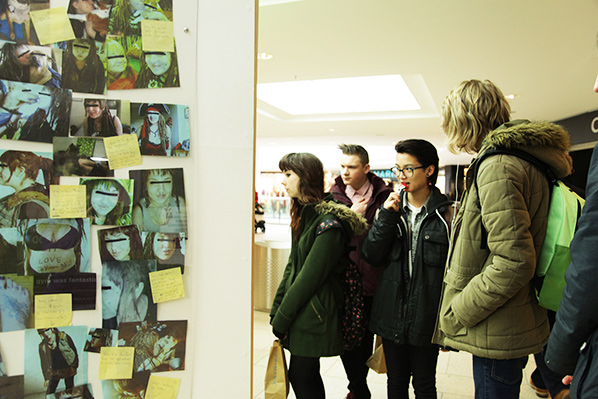
With his novel use of Twitter, US artist Andy Deck savours the wildness of everyday language with people around the world, inspired by the wealth of nature-related sayings passed down over centuries. He invites audiences to help him build a bestiary of animal idioms using social media and an interactive installation.
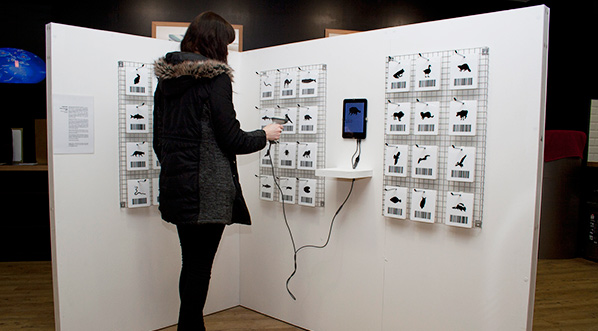
Experimental filmmaker Pete Gomes invited residents in Sunderland with no acting experience to participate in a 45 minute long acting session. Each participant was directed to perform on camera for a single five-minute take. Screened as a series, Cycle of Purposes questions reality and artifice by exploring how thoughts and feelings are acted, amplified, exaggerated and stylised every day in response to different people and places.
Mary Flanagan travels overland and undersea, in virtual worlds built and inhabited by other virtual beings. [borders] is a video documentation of her walks in beautiful and hypnotic landscapes that expose the boundaries of the virtual world by testing its edges. Her walks are inspired by Thoreau, the great American nature writer and walker, who, avoiding highways, chose instead to wander in order to understand the spiritual possibilities of the landscape.
Mall of the Wild by Transnational Temps is a new commission created especially for Digital Zoo. Players help the famous artist Magritte to find fake wildlife in the shopping centre. Equipped with a store map and a smart phone app, they have limited time to find a number of representations of wild animals visible in the products of the shopping centre. They map rare species and share their wildlife documentary photos in the online “Ceci n’est pas…” collection via social networks.
In creating DIGITAL ZOO, Furtherfield believe that digital networks and social media offer the potential for a more open relationship between artists and audiences, changing the life of an artwork in the world, and the ways in which people encounter it, and sometimes collaborate in its creation.
Personal information is exchanged with increasing frequency, and daily lives are becoming ever more public, as if in a public zoo. People are both animals and visitors; hunters, trackers, observers, naturalists and zookeepers; and educators and pundits. The longer-term social effects of this collective public performance are awaited…
The exhibition was accompanied by a series of creative workshops inspired by Crow_Sourcing for children aged 6-11 years old.
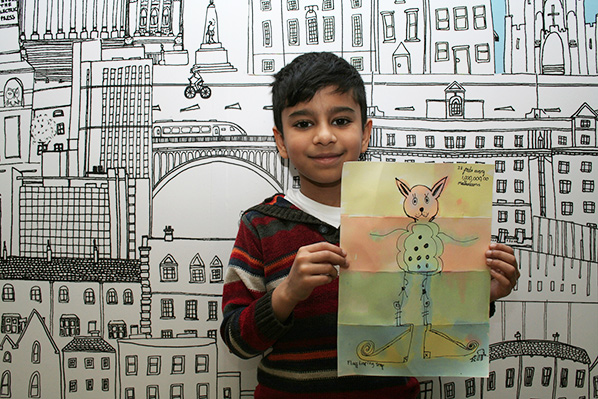
Curated and produced by Furtherfield in collaboration with Culture Code and Land Securities.
Digital Zoo is supported by Arts Council England through the Strategic Touring programme.
Crow_Sourcing by Andy Deck was made possible with funding from the Jerome Foundation, and was a 2012 Commission of New Radio and Performing Arts, Inc. for its Turbulence website.
The Arts Catalyst in partnership with Furtherfield
Gallery tour with the artists, Saturday 21 June 2pm
The SEFT-1 exploration probe will be on display next to the gallery 20–22 June, 11–13 July, 18–20 July and 25–27 July 2014.
SEE IMAGES FROM THE PRIVATE VIEW
Ivan Puig and Andrés Padilla Domene (Los Ferronautas) built their striking silver road-rail SEFT-1 vehicle to explore the abandoned passenger railways of Mexico and Ecuador, capturing their journeys in videos, photographs and collected objects. In their first London exhibition, SEFT-1 Abandoned Railways Exploration Probe – Modern Ruins 1:220, commissioned by The Arts Catalyst and presented in partnership with Furtherfield in their gallery space in the heart of Finsbury Park, the artists explore how the ideology of progress is imprinted onto historic landscapes and reflect on the two poles of the social experience of technology – use and obsolescence.
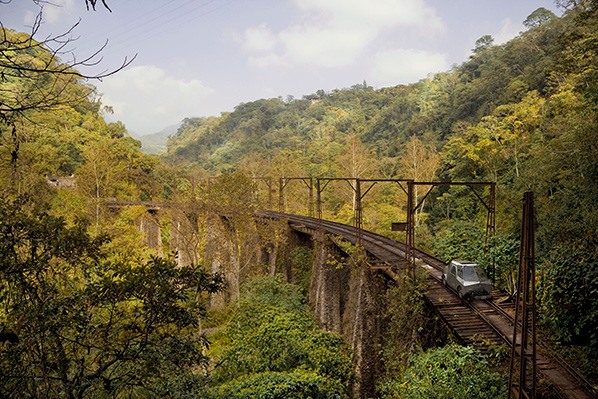
Between 2010 and 2012, the artists travelled across Mexico and Ecuador in the SEFT-1 (Sonda de Exploración Ferroviaria Tripulada or Manned Railway Exploration Probe). In a transdisciplinary art project, they set out to explore disused railways as a starting point for reflection and research, recording stories and testimonials as well as the landscapes and infrastructure around and between cities. Interviewing people they met, often from communities isolated by Mexico’s passenger railway closures, they shared their findings online, www.seft1.com, where audiences could track the probe’s trajectory, view maps and images and listen to interviews.
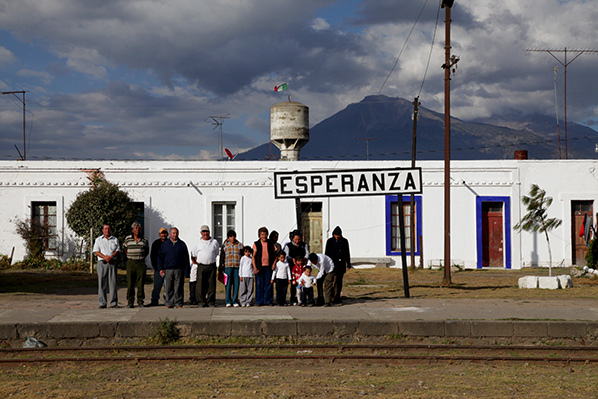
The artists’ journeys led them to the notion of modern ruins: places and systems left behind quite recently, not because they weren’t functional, but for a range of political and economical reasons. In the second half of the 19th century, the Mexican government partnered with British companies to built the railway line that would connect Mexico City with the Atlantic Ocean – and beyond to Europe. This iconic railway infrastructure now lies in ruins, much of it abandoned due to the privatisation of the railway system in 1995, when many passenger trains were withdrawn, lines cut off and communities isolated.
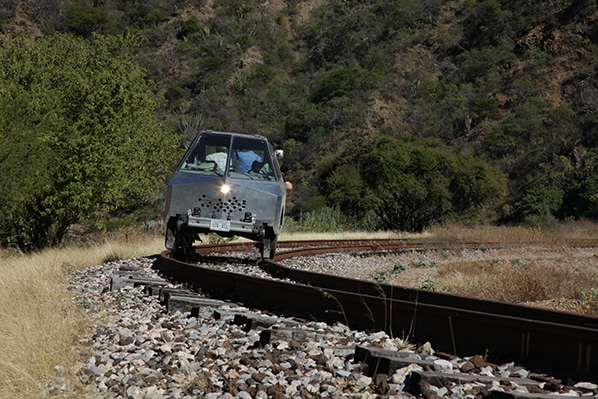
For this new exhibition, the artists are inviting British expert model railway constructors to collaborate by creating scale reproductions of specific Mexican railway ruins exactly as they are now. One gallery becomes a space for the process of model ruin construction. The room’s walls will show the pictures, documents, plans and other materials used as reference for the meticulously elaborated ruin construction. With this action a dystopian time tunnel is created.
Ivan Puig (born 1977, Guadalajara, MX) has exhibited internationally in Mexico, Germany, Canada, Brazil and the United States. He is the recipient of a number of awards and residencies including the BBVA Bancomer Foundation Grant for the SEFT-1 project (2010-2011) and the Cisneros Fontanals Foundation (CIFO) Grant in 2010. Puig, a member of the collective TRiodO (with Marcela Armas and Gilberto Esparza), lives and works in Mexico City.
Andrés Padilla Domene (born 1986 in Guadalajara, MX) has exhibited work in various contexts including ISEA 2012 (Albuquerque, New Mexico), The National Museum of Art MUNAL (Mexico City, 2011), 04 Transitio_MX (Mexico, 2011), and EFRC, Centro de Arte Contemporáneo (Qutio, Ecuador, 2012). His video work as director and producer with Camper Media includes documentaries, fiction films and TV shows.
Tuesday 17 June 6.30–9.00pm – artists Ivan Puig & Andrés Padilla Domene will be in conversation with The Arts Catalyst curator Rob La Frenais during London LASER 04 at University of Westminster (book here)
Saturday 21 June 2pm – Gallery tour with the artists, FREE
Saturday 21 June 3–5pm – A de-industrialised estate – Talk with Dr Malcolm Miles and discussion with the artists at Furtherfield Commons – (limited capacity £5, details and online booking here)
Saturday 12 July 11.30am–1.30pm – Drop in to the gallery and meet model railway maker extraordinaire Neville Reid and artist Andrés Padilla Domene, FREE
Saturday 12 July 2–4pm – Death Collapsing Into Life – Guided walk along Parkland abandoned railway with landscape architect, urbanist and writer Tim Waterman (limited capacity £5 and up to two children under 15 free, details and online booking here)
With support from Embassy of Mexico, Arts Council England, Central de Maquetas.
Furtherfield Gallery
McKenzie Pavilion, Finsbury Park
London N4 2NQ
T: +44 (0)20 8802 2827
E: info@furtherfield.org
Furtherfield Gallery is supported by Haringey Council and Arts Council England
Autonomous spaces, autonomous networks, boxes and forks – we invite all DIY lovers to come and join us for an afternoon of re-appropriation of networking technology to bypass the censorship and liberate our files.
What does a free culture look like? What is technology that supports it? For many years artists (among others) have been engaging with these questions, challenging restrictive laws and regulations as well as complex technical solutions. A new surge in search for practical solutions to file-sharing, easier to use and incorporate to our everyday life is the focus of this workshop. On the day we will install and use Piratebox and Librarybox on various devices to test their promise.
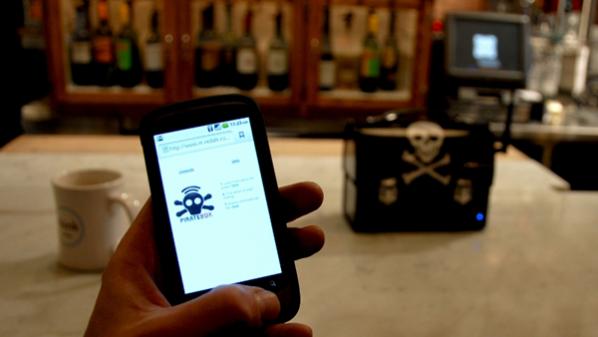
Inspired by pirate radio and the free culture movements, PirateBox utilizes Free, Libre and Open Source software (FLOSS) to create mobile wireless communications and file sharing networks where users can anonymously chat and share images, video, audio, documents, and other digital content.
Piratebox fork, LibraryBox is an open source, portable digital file distribution tool based on inexpensive hardware that enables delivery of educational, healthcare, and other vital information to individuals off the grid.
+ For more information about the event please contact Larisa Blazic.
Flossie is for women interested in using open source as coders, artists and social innovators. We run an annual conference and also regular events in London.
Furtherfield Commons
Finsbury Park
Near Finsbury Gate On Seven Sisters Road
E: info@furtherfield.org
Furtherfield Gallery is supported by Haringey Council and Arts Council England.
Codasign, in partnership with Furtherfield, will be running a new series of creative technology workshops for different ages at Furtherfield Commons, a hub to connect and activate local and international communities of artists, technologists, thinkers and doers.
Interactive Puppet and Story Workshop
Saturday 15 February 2014
10am – 12:30pm – 6-9 year olds
2-4:30pm – 9-12 year olds
Come and learn how to create your very own interactive hand puppet which tells you a story using Scratch and MaKey MaKey!
Create a Tron Hoodie
Sunday 23 February 2014
11am – 1pm
Upcycle your hoodie using electroluminescent wire.
Make Your Own Platform Game With Scratch
Saturday 1 March 2014
10am – 12pm – 6-9 year olds
1:30-4pm – 9-12 year olds
Learn how to create your very own platform based computer game in Scratch!
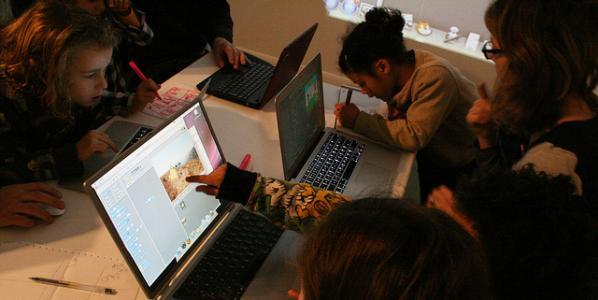
Miniature Circuit House
Saturday 15 March 2014
10am – 12pm – 6-9 year olds
1:30 – 3:30pm – 9-12 year olds
Wire up your own shoebox sized house using different electronic components which will be inserted into a circuit drawn with Bare Conductive‘s paint.
Soft circuit phone badge
Saturday 22 March 2014
10am – 1pm
Create a soft circuit badge which flashes when your phone receives a text message or is ringing.
Make a Musical Instrument with Paint, Scratch and MaKey MaKey
Saturday 24 May 2014
10am – 12pm – 6-9 year olds
1:30 – 4pm – 9-12 year olds
Come and learn how to make a conductive painting to control a musical instrument that you’ve created in Scratch and MaKey MaKey!
For more information and to book a place to any of the workshops please visit Codasign website.
All supporting material for the workshop will be available at learning.codasign.com.
VISITING INFO
Located by Finsbury Gate entrance on Seven Sisters Road
T: 0208 802 1301
E: info@furtherfield.org